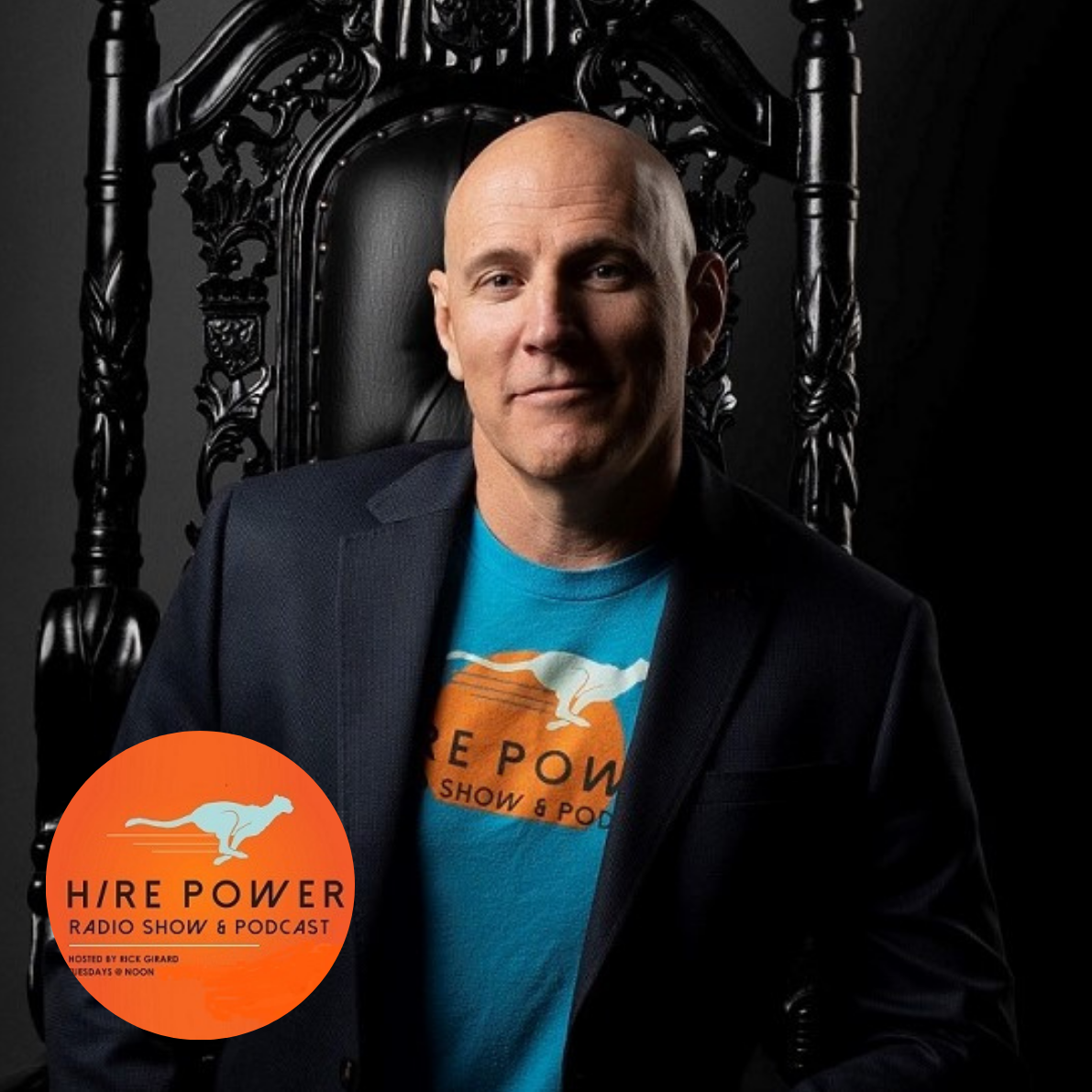
Welcome to the Hire Power Radio Show, where entrepreneurs and business leaders learn to hire with confidence and precision. Hosted by Rick Girard, this show is your go-to resource for avoiding costly hiring mistakes and securing the right talent to drive your company’s success. We dive deep into hiring challenges each week, featuring candid conversations with top-performing rebel entrepreneurs, disruptors, and industry experts. Join us every Tuesday at noon (PT) on LinkedIn Live for actionable insights, proven strategies, and the latest trends to give you the hiring edge. Subscribe now and join the movement to transform your hiring game. Do you have thoughts or questions? We’d love to hear from you!
Episodes
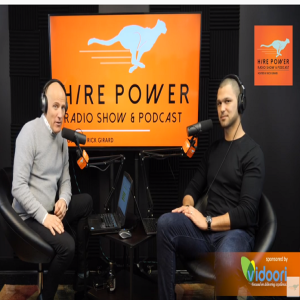
Thursday Jan 23, 2020
Interview Qualification is a Two-Way Street with Greg Toroosian of Elevate Hire
Thursday Jan 23, 2020
Thursday Jan 23, 2020
Each individual brings a unique perspective to every interview conversation. Yet most interviews focus on “what you can do for me” almost entirely from a skills perspective. People want to know what’s in it for them before they choose to engage with you.
Today’s Quote:
"Though we may have desires or bold goals, for whatever reason, most of us don't think we can achieve something beyond what we're qualified to achieve." - Simon Sinek
Our guest today: Greg Toroosian, Founder & Managing Director of Elevate Hire
Greg Toroosian founded Elevate Hire after more than a decade in the Talent Acquisition space. Having previously worked for startups, globally recognized brands, and recruiting agencies, He believes that recruiting and retaining talent is key to having a successful company.
Greg is an expert at qualifying talent for organizations which has led to successful hires for many clients in a variety of industries.
Today we are going to discuss:
- Types of qualification
- Plan of attack on how to effectively qualify people
What is candidate qualification?
- Definition: A quality or accomplishment that makes someone suitable for a particular job or activity
- Two types of qualification
Checkbox
- Asking yes/no questions
- Requirements focused
- Doing the bare minimum
- Ineffective because you are lying to yourself
Thorough
- Have a clear understanding about what the person is actually looking for
- Clarify the likelihood of acceptance of the job
- Fit for the company
- Answer the question (Is this a good candidate)
What's important for qualification?
- Look at profile (linkedin, resume)
- Longevity, career trajectory, companies/industries, titles
- Recommendations (linkedin)
How do we avoid having a checkbox process
- Mindset of the call: don’t go into every call wanting or being hopeful that this person will work out. Ask the questions that unearth what you really need to know.
- Conversational qualification calls.
- Ask open questions, ask scenario-based questions, and ask questions that will determine if this person is a non-starter.
- Listen carefully. Be strict and be honest.
Framework for Effective Qualification
- Firstly, you need a clear understanding of the role you’re interviewing for, its scope, the immediate need, and the future possibilities.
- Be comfortable in leading the conversation so you can get the questions answered that you need.
- Conversational and open questions with enough space for the person to really say what you need to hear.
- Have a form of the questions to be asked, know what you need the answers to be, but don’t read a script.
Key Takeaways:
- Build your own qualification form to use as the foundation for every call.
- Questions that unearth a lot:
- Why are you open to a new role?
- What are you looking for from your next role?
- Talk me through your current role and responsibilities. You can tell a lot about someone's role, their involvement, and their overall understanding of their craft by hearing them speak freely about it. Take notes and then clarify any points you need to.
- After telling them about your open position, ask them how it sounds to them as a next step? What specifically appeals to them from what you shared? Get them to sell the role back to you and to sell themselves as a candidate.
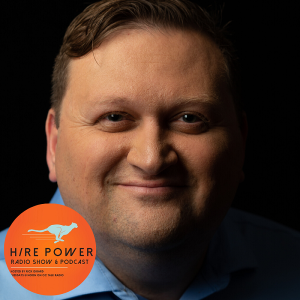
Thursday Jan 16, 2020
Thursday Jan 16, 2020
Making a strong hire starts with attracting the right people. Knowing who the right hire is the first step. But in order to attract the right people there needs to be a message that resonates with the individual and motivates them to respond.
Today we are talking about hacking your hiring through the use of communication profiles.
Today’s Quote:
"Hacking involves a different way of looking at problems that no one's thought of." - Walter O'Brien
CEO of Scorpion Computer Services and executive producer of the TV series Scorpion
I’m Rick Girard and welcome to the Hire Power Radio Show. Our mission is to help Entrepreneurs and hiring managers to avoid costly hiring mistakes by identifying a specific problem and provide proven solutions to enable you to WIN the right hire. We share insights from top-performing rebel entrepreneurs, disruptors & industry experts.
Like our guest today: Christopher Hadnagy, CEO of Social-Engineer, Inc.
Chris Hadnagy is a professional social engineer, author of 4 books, and keynote speaker. He’s the CEO of Social‐Engineer, LLC, a company who serves some of the globe’s largest organizations. Additionally, Chris provides free resources, including the world’s first Social Engineering Framework, via Social-Engineer.Org, and heads the Innocent Lives Foundation, a non-profit that unmasks anonymous child predators.
So Christopher knows hacking! Which makes Christopher a perfect expert for today’s topic.
Christopher, Welcome to the Hire Power Radio Show today!
Today we are going to discuss:
- Identifying the right person
- Crafting the right messaging to attract
- Logical steps to weed out the obvious
Problem
- Really bad hires!
- People look great on the surface
- Not showing up for work
- Quitting fast
Why am I having an issue getting good employees?
- *** realize how much time you spend on the back end when you hire with the wrong people
- Aftermath
- Lost over 100 hours and thousands of dollars
- Killed company morale
- Outline the type of person you want before you start interviewing
- Thinking about the work that needs to be accomplished
- Defining expectations up front
- Managing your own expectations- avoid unreasonable tasks
- Experience expected to have
Rick’s input
-
- Create messaging around the personality profile of a successful hire
- Pain, Desire & Impact
How do we fix it?
- Determine the best communications profile first
- Write the job description with keywords that attract the right people
- Describe the words and language to attract the right person.
- Detract the wrong people.
- Logic steps to weed out the obvious
- A list of questions to determine the right fit, video interview to whittle down to 3
- Give the disc test - confirm communication style
- Weed out the wrong cultural fit
- Confirm what is really needed with who the person is
How does one determine the right messaging?
- Disc profiling roles (general)
- D- management, leadership, - Aware D - understands how they communicate
- I- Sales, public speaking, Training
- S- HR, support role,
- C- Accounting, office management - detail & organization
Rick’s Nuggets:
- One size fits all messaging does not work
- Create messaging with a call to action to minimize
- Performance metrics attract the right people
- Plan and put process in place
Key Takeaways:
- Time invested in the prework saves thousands of dollars for the company
- Define what it is that a person must have
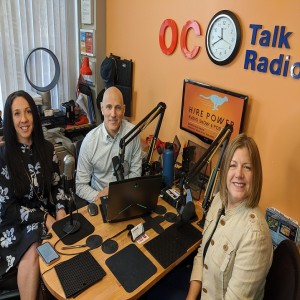
Thursday Jan 09, 2020
Business Aligned Hiring Roadmap with Kelly OConnell & Shelley Iocona of ON ITS AXIS
Thursday Jan 09, 2020
Thursday Jan 09, 2020
We all get how impressive the hire from a name brand company might be. However, more often than not, making the vanity hire turns out disastrous for both parties. Why?
Too often hires are made based on a particular set of skills or a person’s pedigree. Not taking into account the importance of cultural alignment or the objectives of the business. Your hires should be made on the basis of what is best for the company backed by evidence of performance.
Today we are talking about how to Accelerate Company Growth with a Business Aligned Hiring Roadmap.
Today’s Quote:
"I've found that luck is quite predictable. If you want more luck, take more chances. Be more active. Show up more often."
- Brian Tracy
Our guests today: Kelly OConnell, Executive Vice President & Shelley Iocona, Founder & Principal of ON ITS AXIS.
ON ITS AXIS is a Product and People firm. We help organizations validate new digital product ideas and build the teams that allow them to successfully take them to market.
They have found that just as the launch of a successful product begins with a customer-centric roadmap, Talent Acquisition that is grounded in understanding how a company can most efficiently deliver client satisfaction and adapt to changing client needs is critical to a company's ability to efficiently scale.
Today we are going to discuss:
- The common mindset and the problems that are created
- The importance of building a business objective roadmap
- How to create your own roadmap
Why is this important?
The strength of the company is the people delivering the product in the marketplace. The winning company will have the strongest team. When managers struggle to hire it directly impacts team productivity and company growth potential.
It is important for organizations to approach hiring with a business objective roadmap rather than focusing exclusively on skills and perceived fit.
What challenges Hiring Managers face?
The most common challenges we observe in the market are:
- adhoc hiring: where a manager is under pressure to make a hire in response to an urgent perceived team need
- confirmation hiring: where a manager tries to identify a replica of their own profile or the profile of a successful team contributor
- cultural fit exclusion: where a manager rules out a candidate based on their subjective perception that they won't fit into a current team culture.
Although understandable, particularly for high growth teams, hiring to a standardized and generic target profile is problematic because too much of a focus on matching skills and current team fit can lead to uniformity in the workforce that can unintentionally limit both the potential candidate pool and the potential for innovation in the workplace.
These challenges can result in several problems including
- Endless interview cycle with no hires
- Offer turn downs
- High Company Turnover Rates
- The incorrect perception that a company needs A LOT more developers or Sales People etc. to achieve goals which can adversely impact profitability and growth
Additionally, there is often a corresponding negative impact to the existing team culture when organizations approach hiring in this way:
- Internal Team Conflict
- The current team is overworked and under pressure.
- Existing people feel they are doing more than their fair share of work
- Poor Team Productivity and Missed Deadlines
- Perception that the current team members are the “wrong fit” for the company
What needs to be in Place?
A structured, and efficient interview process.
Align hiring triggers to business model objectives, structure team OKR’s to directly correlate to key company goals and at each hire to modify the generic role job description and interview scoring rubric to address the most essential team gap at that given point in time.
This doesn’t mean that companies should ignore skills and culture. They are important but we see them as part of the larger talent acquisition and internal performance management plan.
Companies that most rapidly grow, are capable of executing nimble pivots in response to changing customer expectations.
Team members must be able to grow and evolve within the company. Rather than hiring for proficiency in a laundry list of current skills, instead, we encourage companies to establish predictive hiring indexes that will help them to assess a hires potential to learn and evolve to changing expectations within the company.
How do we fix it?
- Define the core success factors that allow you to best serve your users
- Identify the key technical and soft-skill gaps in your core team
- Leverage a Data-driven approach to both team composition and hiring capacity (Swarmvision- profiling to predict innovation capacity for teams- this is not personality profiling
- Create a regular cadence for review of your talent acquisition roadmap
- Provide all employees with a clear path to career development & professional growth
We encourage clients to Hire to fill the most impactful skill-gaps on your existing team and be willing to transfer internal team members into new roles that better serve them and your business objectives.
Creating a business aligned hiring roadmap not only helps organizations avoid several of the pitfalls previously shared but it also has the added benefit of helping organizations attract and retain both gen Z and gen Y employees.
Rick’s Nuggets
- Structured Hiring process wins hires!
Key Takeaways:
- Embrace a structured interview process that is based on a strategic hiring roadmap to avoid pressured hiring decisions and confirmation bias
- Just as you evaluate your company business plan at a regular cadence, develop a regular cadence for review of your organization's talent acquisition plan
- Rather than matching employees to a current team profile, view each hire as an opportunity to complement the strengths of your existing team and to support your most critical team business objectives. This will allow your organization to evolve to changing customer sentiment.

Friday Jan 03, 2020
Hiring People Who Are Outside Your Comfort Zone! with Aaron Elder of Crelate
Friday Jan 03, 2020
Friday Jan 03, 2020
It is all too common to look for the person who brings the skills you deem necessary for your role. But the person who brings all the skills may not be the best person in the role. There are a lot of people who are in adjacent industries or sitting on the sidelines who are open to an opportunity like yours.
What does it take to find great people? Looking past the skills for evidence of success that will be transferable to your company. As we all know, past performance is a key indicator of future performance.
Today’s Quote:
“Take a chance! All life is a chance. The man who goes farthest is generally the one who is willing to do and dare.”
- Dale Carnegie
Our guest today: Aaron Elder, Co-Founder & CEO of Crelate
Aaron is a serial entrepreneur with 4 successful products, 3 companies and 2 exits under his belt. He is a designer, turned coder, turned CTO, turned CEO who is passionate about creating products people love and make the world better.
Crelate exists to help businesses continuously align people with opportunities. Aaron has a passion for taking a chance on people who are changing careers - giving people a shot
Today we discuss:
- Hiring outside the norm to combat the talent shortage
- a recipe to successfully hire
Solution to the talent shortage
- Taking an age blind approach
- Considering the skills level
- Not just a blind hire
Challenges?
- Casting a wider net- seeing through things
- Opening the holes in the net
- Look past skills to the ancillary skills
- Career shows you as a non-fact (switching careers-coming in as a jr person). Measure people based on risk rather than
- A propensity for learning new things, being innovative and growing, you will probably be able to bring that to the table
Issue of Compensation
- Is a pay cut really realistic? Taking a shot
- Until you talk to them, you don’t really know.
- *** Training and investment need to be real. The organization needs to be all in on people development
Rick’s input
- Look for transferable skills
- Adjacent industries
- Evidence of success
How do we fix it?
- Finding the people who are performers and not just seat fillers
- indicator of career changes,
- Tenacity & grit, raw materials
- Look for evidence of past success
- Hide Easter egg’s in the job post.
- Questionnaires
- Invest in Recruiters- matchmakers
- Have more conversations with people and look past the resume
- Internal training programs
- The long game is the only solution he knows.
- Short term road bumps but long term it is an investment in an approach.
- Be self-aware of the game
- optimize for the long game (bring investors on board)
- Looking to solve a long term problem - at least a 2-year problem
- Education & training which require intense focus and investment upfront.
- Benefit? -the path for retention, earned loyalty, path for mutual benefit
- If you are not growing, you will have a hard time keeping people who want to be growing
- Take more chances on people who do not have ALL the skills
- Creating training, review process that career ladder, reviews, culture for people to enjoy
- Invest in systems to automate points 1 & 2 more possible
Key Takeaways:
- Solve the talent gap/shortage by being able to take chances on people, give them a chance to tell their story and see if it fits. Look past skills to underlying achievements, velocity, grit, etc.
- Invest in the long haul - internal learning, time, training, the culture of personal growth and achievement.
- Do what you can to make #1 and #2 more efficient. That means the right tools and processes that fit those goals. Not work against them.
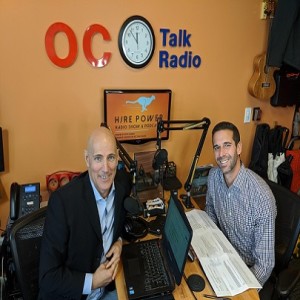
Thursday Dec 12, 2019
Is Fractional Leadership The Key to Startup Growth? with Matt Spooner of GigX
Thursday Dec 12, 2019
Thursday Dec 12, 2019
Seasoned leaders are out there and they are willing to work with your startup at more than just an advisory level. They are called fractional leaders and they are easier to find than you might think.
Consider the possibility that in this hiring market, seasoned veterans maybe your best hiring option for building your company!
Today’s Quote:
"We came into a broken world. And we're the cleanup crew." - Kanye West
Our guest today: Matt Spooner, Fractional Chief Business Development Officer for GigX
Matt has nearly two decades of experience within the arenas of Marketing, Sales, Business Development, and Account Management. He has built and led high-performing teams within both the for-profit and nonprofit sectors. His cross-industry, cross-function experience allows him to approach opportunities and issues from a unique and valuable standpoint.
Fun fact, Matt is an avid endurance athlete who has completed 3 ultra-marathons!
Prior to joining GigX, Matt worked in the world of retained executive search. His role as a Vice President at McDermott & Bull has kept him close to hundreds of C-Suite leaders and hiring managers. Matt is plugged into the senior-level executive community - he understands what they bring to the table...and how organizations can best attract and leverage them.
Today we are going to cover
- The benefits and drawbacks to fractional leadership
- where to find fractional leadership
- How to evaluate and Hire them
Problem
What is Fractional Leadership?
Why is this important?
- Budgetary issues and/or concerns frequently limit companies from hiring senior-level leadership; This is an acute pain point for SMBs and early-stage organizations
- Frequently, these companies don’t consider and/or realize that their issues re: talent can be solved by exploring “independent” options such as fractional talent
- Even when these companies have a desire to explore fractional leaders, it’s challenging for them to find this type of talent
- There are a lot of misconceptions re: senior-level talent. Here are a few:
- SMBs and early-stage companies can’t afford them
- They only want full-time roles
- They’re too set in their ways
- They’re not as nimble
- They’re not current
How do we fix it?
- Fractional talent is the answer
- Why it is beneficial?
- Most fractional leaders are senior-level executives who’ve pivoted in their careers and are now serving multiple organizations simultaneously
- Fractional leaders bring their numerous business connections/relationships with them; In many ways, they serve as de facto Business Development professionals for the organizations they work for
- They show-up on Day 1 with an immense amount of acumen and skill
- They’re less of a “flight risk,” as their desire is to serve on a long-term basis
- Their experience, talent, and connections allow them to do the work of multiple team members
- Companies can get the acceleration and acumen that they need, and only pay a fraction of the price for it
- Steps to hire someone
- The first (and most important) step: Pursue the in-transition population! Why? Because this population represents a talent market that’s highly-skilled and readily-accessible, yet largely underutilized.
- The second step: Know the time commitment that you’re asking for. Why? This will show the fractional executives you speak with that you understand one of their top criteria for engaging with a prospective client: How much of their “bandwidth” are you asking for.
- The third step: Collaborate on expectations. Why? Because you’ll only be engaging with your fractional executive during a portion of any given week/month/year, you’ll want to have clear KPIs that you’re moving toward and monitoring. Similarly, you’ll want to set expectations around how often you’ll be “seeing” each other - whether it’s in-person and/or via a platform like Zoom, Skype, or FaceTime
Key Takeaways:
- Fractional leadership is an affordable and powerful way to bring C-Level execs into your organization
- There are thousands of overlooked, undervalued senior-level leaders that can be leveraged immediately for fractional roles
- The key to success with fractional leaders: Create clarity early-on re: time commitment, KPIs, and when/how to connect
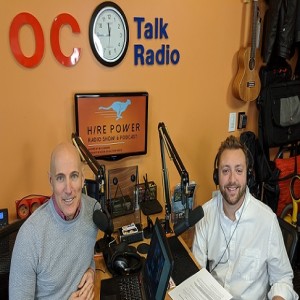
Thursday Dec 05, 2019
How to Pipeline Talent Without a Talent Brand with Jack Copeland of Staffing Future
Thursday Dec 05, 2019
Thursday Dec 05, 2019
How are you going to attract the strongest talent for your company when people have no idea who you are? The truth is, you are not! Passive talent and those who are not on the open job market will just ignore you because you are just another me-too company.
This is why you will rely on the “I know someone” method to hire Your best source for talent is referrals. What if you can gain awareness before you reach out to someone
Today we are talking about How to pipeline talent when you don’t have a talent brand
Today’s Quote:
“Brand is just a perception, and perception will match reality over time. Sometimes it will be ahead, other times it will be behind. But brand is simply a collective impression some have about a product.” - Elon Musk
Our guest today: Jack Copeland, Founder & CEO of Staffing Future
Staffing Future, a website development, and technology stack consultancy, with expertise in building, developing and managing technology solutions. The team has built over 600 staffing Agency websites and deployed innovative technology solutions with a multitude of third-party apps to create a holistic sum of their parts.
Jack has worked and consulted with dozens of recruiting software providers who are inclined to augment and develop the industry, they include top tier originations like CareerBuilder, and Tracker RMS.
Today we are going to cover
- What is a talent brand & why it is important
- Framework to build your talent brand
What is a talent Brand:
The message you want to provide to potential talent about who you are, what it’s like to work for you and why they should work for your company.
What’s the difference between a proactive and reactive Talent Brand?
Most small and medium companies don’t even think about what their Talent Brand is but a proactive Talent Brand is taking the time to understand your message, providing a platform for potential hires to engage before speaking to you and pipe lining potential hires.
Problem
- What is a reactive talent brand:
- Persuade people why you are the right company to join
- You are selling to them
- Happens late in the game
- Spend money to get people through the door
- Eliminated access to Heavily sought after talent
- Not responding, applying or know you
- No idea who you are or your value
- You have no perceived value
Rick’s input
- Talent brand is not as important as answering “what’s in it for me”
- About solving an individual problem
How do we fix it?
- Optimizing the website to maximize attraction offering a place to engage for potential candidates
- Solidify your message around who you are, what it's like to work for you and the ethics and values of your business, make sure your management team and business goals align with these internally
- Identify your target ‘finite’ talent and implement strategies to engage and nurture proactively
What are three practical things I can do:
- Understand who you are? Take the time to evaluate your business. Why would I want to work here? Why would I want to stay here? What kind of people are your looking to engage and fit with your culture? How can you retain and attract them. What kind of people are not a good fit? What is our culture and what do i want out culture to be. Summarize this
- Provide a platform for people to engage on your social and website, allow a place for people to understand your business without talking to you and your team. You have no idea who isn't taking your call, applying to your jobs or responding to your recruiters. It’s a marketing exercise to engage potential buyers just like the product you sell. If you have this is can help your convert taken to the top of the funnel if you don't have this it's a red fag.
- 3. Be proactive. For most SMB companies there is a finite resource of available talent in their location and market. E,G Python developers in Portland. How can you get them to understand you exist? Connect with potential hires on LinkedIn before you ate hiring at a C-level and have an open door policy, push out social content but focusing on working for your company and it’s values, attend or host career fairs and speak to relevant colleges. Find a meaningful way to tap into your employees network.
Rick’s Nuggets
- Perks, benefits and free lunch are not attractors
- Companies rely way too much on perks to retain people
- People development needs to be the focus
- Humanize the messaging
Key Takeaways:
- Understand who you are what your message is
- Provide a platform for highly sort after talent to understand who you are
- Be proactive in pipe lining and reaching your core talent in most cases it;s a finite resource.
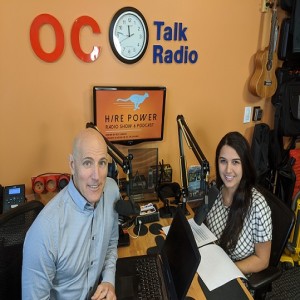
Friday Nov 29, 2019
Referrals Vs Applicants with Ladan Davia of Beeya
Friday Nov 29, 2019
Friday Nov 29, 2019
According to Linkedin, the #1 way to discover a new job is through a referral… and referrals are the top source of quality hires.
Look, there are good people responding to posted jobs but most likely, they are being passed over. Why?
Our guest today says “The answer is serving up less to maintain more” when looking for talent. Using AI and machine learning can help target the right applicants to diversify your talent pool to find the right hire.
Today’s Quote:
“If opportunity doesn’t knock, build a door.” - Milton Berle
I’m Rick Girard and welcome to the Hire Power Radio Show. Our mission is to help Entrepreneurs and hiring managers to avoid costly hiring mistakes by identifying a specific problem and provide proven solutions to enable you to WIN the right hire. We share insights from top-performing rebel entrepreneurs, disruptors & industry experts.
Like our guest today: Ladan Davia, Founder & CEO for Beeya
Beeya, is a meta-search engine for jobs that hosts all jobs on the internet, in one place. It is the only platform that uses artificial intelligence and machine learning to accurately match candidates to jobs they are qualified for, solving the faulty keyword issue other online platforms serve users.
Ladan has been featured in publications such as the New York Times, Fox Business, and The Wall Street Journal, and is using her influence to help young entrepreneurs, especially women, break through the tech industry.
Which makes Ladan a perfect expert for today’s topic.
Ladan, Welcome to the Hire Power Radio Show today!
Today we are going to cover
- Referrals vs. applicants -benefits to each
- Other options for hiring
- How to level the playing field and bring the right talent forward regardless of where they came
Why it is wrong to focus on referral candidates?
- Unfair advantage to people who are connected
- Not based on merit
Why employers are losing good people?
- Just because someone is in transition does not mean they are bad
- Referrals are not necessarily the best hire
Why it costs employers more?
- They are not hiring the right people
- Taking the easy out by hiring the easy way.
Rick’s input
- Time is the big factor here
- Referrals take less time and are partially vetted
- Not putting the right amount of diligence in the interview process
- Other options
- 3rd option - targeted recruiting
- More time-intensive, allows you to stack the deck with A-players
How do we fix this hiring issue?
- Different ways of filtering applicants
- Keyword filtering does not work (no buzzwords)
- Needs to go
- What do we focus on then if not keywords??
Time issue?
- How to replace the keyword with AI & ML
- Challenges: the AI can become bias
- Need to eliminate name, age & gender
Rick’s Nuggets
- Applicant Filtering
- Performance metrics in the job description
- Eliminate buzzwords
- Call to Action in the JD to self filter… answer to 3 questions
- Time issue
- Utilize the phone screen
- 30-45 minutes will save hours in the long run
Key Takeaways:
- Look for alternative ways to hire and stay away from a keyword match
- Don’t be so open to referrals. Open your mind to other people
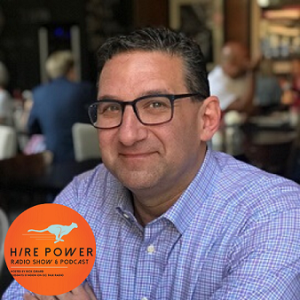
Thursday Nov 21, 2019
Thursday Nov 21, 2019
Telling a story is the quickest way to gain a person’s attention. The challenge in recruiting is telling a story that is compelling to the person you need to hire. And to top it off your story is just like everyone else and it is all about you!
What if we wrote each story differently than everyone else. Would we get better results? Damn right you will, and today my guest and I are out to prove it!
Today’s Quote:
"Storytelling is the essential human activity. The harder the situation, the more essential it is." - Tim O'Brien
Our guest today: Michael Goldberg, Founder & CEO of Hiring Transformed
Recruiting Strategist, Talent Finder, and Hiring Manager Whisperer all describe Michael who advises and coaches Talent Acquisition Leaders through roadblocks. The biggest obstacle is the ability of both recruiters and Hiring Managers to tell stories that are authentic and engaging. Michael also assists talent organizations with strategies to increase productivity, create strong recruiter/hiring manager partnerships, and lead change management initiatives.
Today we are going to cover
- The importance of storytelling in recruiting
- How to tell a better story and the framework for recruiting success
Why is storytelling important?
- Give me people now, make sure they are qualified and let’s just get them in the door and we will be able to close them.
- Don’t take the time to engage, just jump in and let’s go
- Don’t know how to kick off relationships.
- Jump right into it about the position
- Most people are not responded
People don’t respond to your messages... Why?
- Very overwhelming
- 4-5 times a day
- Information overload
- The same exact message
- Timing
- Area of interest
- Miss-targeting, misinformed
Rick’s Input
- Text, email, social feeds (paid media)
How do we do it?
- Start with a Story
- The story is told voice to voice!
- Humanize it
- Don’t run the story at 30,000 feet
- Capture their attention in a job posting or messaging
- Could be done as a video or as a blog
- Goal is to get to a phone call
Structure of the story
- Create the Hero- someone within the company
- A successful employee
- Should be a peer
- Makes it more relatable
- Mission or goal and share the obstacles are/were (targeting)
- Immediate and concrete to create rapport to create a connection
- “Have you been in a situation like this before?”
- Resolution (get over the obstacles & hit goals… or it didn’t work out, what would you do differently
- About showing, not just telling
- “Imaging yourself just completing X. You have worked with Sally and Joe and were able to overcome these major obstacles. You were able to deliver X with your team....Like selling a car “Imagine yourself behind the wheel of…”
Rick’s Nuggets
- The story should not be about you
- Try to make the person you are trying to recruit the hero
- Design the story to a specific pain that the person may have
- Make it relatable to that specific person
- Tool for crafting messaging
- Crystal Knows- messaging
Key Takeaways:
- Build trust through strategically crafted stories and will help recruiters differentiate themselves from others.
- Storytelling can take different forms depending on where the storyteller plans on sharing info. Videos, Blogs, & Social Media posts but videos prevail because it is the best way to create trust between the recruiter and the candidates.
- Storytelling should be told throughout the recruiting process. Not only by recruiters but by hiring managers and would-be peers

Thursday Nov 07, 2019
Thursday Nov 07, 2019
Startups suck at choosing recruiting partners!
There is no magic button to push to have candidates pop out for your roles. Before you hire, put the same thought and care into your recruiting strategy as you would into every other aspect of your business. Just having a strategy will dramatically increase your chances of landing great talent as opposed to just hiring those who are ok.
Today’s Quote:
"It is rare to find a business partner who is selfless. If you are lucky it happens once in a lifetime." - Michael Eisner
Our guest today: Amy Arenz, Founder & CEO of Concero Search Partners, LLC
Amy has been in the search and placement industry for more than 25 years. Due to the high demand for her services, Amy founded Concero in 2010 to increase resources and improve the capacity to better accommodate her many clients. Concero specializes in recruiting sales, technical and go to market talent for high-growth, private and publicly listed technology companies.
Show highlights:
- Why picking the right partner is so crucial to your business’s success
- Different types of recruiting options & What to look for your particular situation
- How to uncover if the recruiting partner is right for you
Why is it important to choose a recruiting partner?
Time Savings:
- Too much on your plate
- Recruiting is kinda done
- Not really knowing what is needed
- Grouping too much profile into one person… people that don’t actually exist.
- Create more work when you use multiple firms.
- Confusing and burning the market
- Internal recruiters become process babysitters
What are the options?
- Hire multiple firms, Hire an FTE, Hire a contractor, Hire a single partner
- How to determine your needs
Challenges in
- Single Partner vs Multiple Partners
- Single Partner Advantages:
- Learns Company Brand
- Works with the leadership team that they probably hired
- Develop processes that can then be utilized
- Broad # of roles - can you fill lots of different positions or just one specialty
- Leveraging historical experience
Rick’s Input:
-
- More is better is wrong
- Retained vs Contingent
- Dependent on the level of engagement required
- Higher touch and value in a retained partner
What to ask to determine the right fit for your company
Reporting & Data
- Question: How will we know what effort has been put into our search(s)?
- Transparency of Process
- 3-4X pipeline
- Weekly reporting
- What’s in it for me?
Experience and expertise in the space
- Question: What experience do you have in our space? What recruiting tools do you use?
- Not educating the firm on the basics of what you do
- Have a network
- Come in and ramp quickly because of industry niche
It’s not just hiring
- Question: Do you have experience in helping a company set up a recruitment process?
- Job description
- Interview process / candidate experience
- branding/messaging
Rick’s Nuggets
Additional questions to ask
- What problems do you best solve?
- What does your ideal client look like? (independent of our company)
- What are the metrics to best define our expectations
- What is your Interview to placement ratio- Every good recruiter knows this!
Key Takeaways:
- Find a recruiting partner that provides transparency and gains your trust!
- Don’t fall into the trap of the more recruiters the better
- Dig into a recruiting partner’s expertise functioning in non-hiring support roles such as recruiting process design and setting up post-offer onboarding
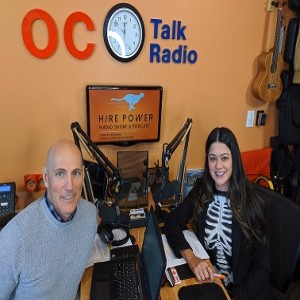
Thursday Oct 31, 2019
Thursday Oct 31, 2019
In honor of Halloween, we are sharing interview horror stories. We all have heard campfire stories of a crazy interview or even a scary hire. Today we are going to help you identify crazy on both sides of the coin to help you avoid a tragic nightmare.
How not to get hired or have someone accept your job offer
Today’s Quote:
"If God treats you well by teaching you a disastrous lesson, you never forget it." - Ray Bradbury
Our guest today: LeiLani Quiray, Founder & CEO of bethechangeHR
LeiLani has a fiery passion for both Human Resources and philanthropy. She believes people are a company’s most valuable asset and they should be cared for as such but no only on a level where the business truly cares but a quantifiable basis where we measure the effectiveness of the programs we put in place to foster a healthy work environment.
be the change HR, Inc., a conscious company and social enterprise, provides fractional HR executive support, strategy and service to businesses in any facet of HR from pre-hire to post-term and everything else that happens in between.
"Be the change you wish to see in the world." - M. Ghandi
Yup...she's doing just that!
- Scary Things people do in interviews
- What scares People from your company
- Avoiding your own horror stories
Warning signs of an upcoming bad interview
- Showing up late, without a phone call
- Typos in the resume- the devil is in the details
- customer experience
- fast paste environment
- Heavy Perfume
Two Stories
- Schwane Schwiley
- Rejection Letter & his response (I have one of the emails!)
- “My Truck was Stolen (and hit by a train) - A case of a negligent hire
Rick’s Input:
Company Fails
- Lack of clarity & setting performance metrics
- Constant re-scheduling
- Unstructured interview process
- Arrogant interview process
- Setting the environment to maximize a person’s performance in the interview
- Group whiteboard test designed to make you crack
- Adversarial
- Erase work while answering questions
Two Story Conclusion
- Schwane Schwiley
- Swifter involvement to protect employees (myself)
- Crazy is out there and you can’t control it
- “My Truck was Stolen (and hit by a train) - A case of a negligent hire
- Background checks are key
- Overlooking criminal history = negligent hiring
What do we need to pay attention to?
- The frame of mind (desperation, urgency)
- Over aggressiveness
Rick’s Nuggets
- Diligence in the phone screen
- Uncover the truth & the crazy
- Focus on the person, not the skills
- Skills-based hires breed horror stories
- Pain, Desire & Impact
- 3 behavioral-based questions designed to get under the hood
- Beware: taking credit, playing well with others & the blame game
Key Takeaways:
- Watch out for warning signs in the very beginning
- Sometimes sh!t just happens but you MUST take action quickly
- Background checks are important!
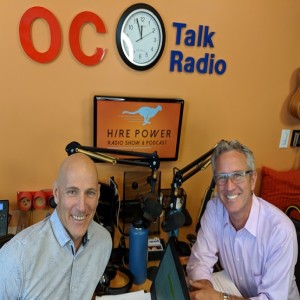
Thursday Oct 24, 2019
Thursday Oct 24, 2019
The purpose of the interview is to get the truth of who a person is and how they can bring value to the business. Common or conventional tactics do very little to do more than scratch the surface of the individual and so we still make hiring decisions based on likability and bias. Which is why we make bad hires!
The questions that you ask, are the questions that hurt you. Because they are unimpressive and do very little to showcase your organization as outstanding.
This show is proudly sponsored by Vidoori
Today’s Quote:
“Experienced managers interview to qualify. Inexperienced managers interview to disqualify” - Mark W Boyer
Guest Bio:
Robert Davis is the CEO of Communities for Cause. He is a seasoned CEO and entrepreneur who enjoys the challenges involved in trying to run and scale companies. Building the structure and creating the company culture required to commercialize a company's passion and grow business by turning great ideas into concrete, actionable steps that yield revenue, repeat customers, and increased cash flow.
I’ve always been a transparent person who doesn't shy away from conflict. I find great satisfaction in working with teams to identify what may be missing and addressing those challenges head-on to effect positive change and rapid evolution.
Show Highlights:
- Preparing for the interview
- Conducting the interview
Why is it important?
- Interviews are riddled with assumptions - king of all F-ups!
- Creating a judgment by the assumption
- Bias
Interview preparation
Create questions on the front end and determine “why” you are asking that question
- Filter down to the questions the most applicable
- Taylor the questions specific to the position
- Wants don’t count in the interview process
Qualifications
- Personality- can be a qualification
- Make sure there is a fit
- Skills/experience
- View of where you want someone to go from and to.
- Growth, mutual path and where the person will fit
- Remove likability from the ultimate decision
Preparation
- What does the business need?
- Align with company values
- Prepare questions designed to understand WHO the person is
- Amazon Behavioral method
- Do not use the resume as your guide!
- Prepare the interviewee on what to expect in the conversation!
Conducting the Interview
- Don’t treat interview casually
- (no cup of coffee at Starbucks), or meet for dinner alone.
- The Start and the stop need to be formal
- Perpetuate bad interview practices unknowingly
- Group meals are fine
- Personal questions- don’t ask (anything about personal lives) If they share, fine
Rick's Nuggets
Interview
- Be organized!
- Put into practice a formal structure, stick to the time, provide feedback
- Structure
- 3-5 people for onsite, 45 minutes per person
- Predetermined questions 3-4 max
- Challenging & Take out of comfort zone
- Eliminate questions that elicit canned response
- Behavioral questions are the most revealing… follow up with why, why, why?
- Amazon does it!
- Sample Behavioral question
*Do you consider yourself to be Lucky? (Positive or Negative outlook on life)
- Explain
- Or Why?
Key Takeaways:
- Be clear and concise with yourself on the information you need to extract
- Don't make it very personal from your perspective
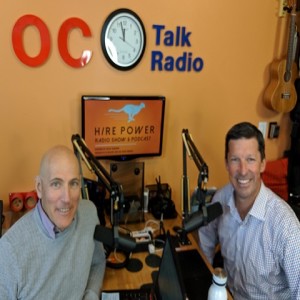
Thursday Oct 17, 2019
Thursday Oct 17, 2019
Founders, the quickest way to attract investment is to already have a team in place and the wheels in motion. People will join your startup prior to raising capital when they are committed to you as a leader and the mission of the company.
You do not need money to hire exceptional talent. You need to know who the business needs first. Then bring value to them personally and/or professionally based on their pains & desires.
Today’s Quote:
"Teamwork makes the dream work, but a vision becomes a nightmare when the leader has a big dream and a bad team."
- John C. Maxwell
Our guest today: Carey Ransom, President of the newly formed OC4 Venture Studio & Host of Accelerate OC
Carey is an entrepreneurial thrill seeker and company builder, serving team members and customers along the way. He has a founder attitude, even when he joins a business already underway, or take over the reins of a company. Carey excels in business and corporate development, technology and product strategy, marketing, sales, and channel partner development, and has led many startup-to-growth companies to successfully pursue breakthrough business opportunities. He’s done millions of dollars of business via LinkedIn as well!
Today we are going to cover:
- Why you should build your team BEFORE you try to raise capital
- How to recruit people when you have no money to pay them
Why is it important to build your team before you start to raise capital?
- -Sell the idea, gets people excited about it.
- Convince people to join, but the employee experience on the inside suck
Where do Entrepreneurs get stuck?
- Pretending you have it all figured out is really dangerous
- -the opposite of the strong figurehead, being vulnerable
- -we are looking for help and we are willing to listen
Rick’s Input:
- Best way to prove your company has legs is to have a team
- Allow people who are involved to become invested by active participation
- Utilize their talent and keep engaged
- “Once I get the Money” syndrome
Mindset:
- High ego to start,
- Be selfless as you can and give it away.
- Want everyone to be a founder in their mind
- Being transparent & vulnerable
- Not having to make every decision
- Not always having to be right
How does one build a team without having the Money?
- Create a Safe Environment for people to take risks without penalization
- Encouraging risk - leader fails first- set the example
Rick’s two cents:
- Network
- Get to know your teammates before you approach to hire
- Understand their career pains & desires
- Look for alignment (do not force it…. Nurture Campaign)
- Plant seeds
- Seize the Opportunity
- Ask for help!
- Gain involvement (advisory to start)
- Communicate and keep involved
- Allow the relationship to grow & evolve
- Create the ecosystem for each person lean in
- Give what you can
- Equity
- Title
- *maintain high integrity
Key Takeaways:
- Look at every single person as an investor. Be open to different types of arrangements
- Be careful to not oversell/overstate your advisor involvement
- Find people who will be really real to keep you grounded. Ultimately the best team wins!

Thursday Oct 10, 2019
The Challenges & Benefits of Hiring Refugees with Chris Chancey of Amplio Recruiting
Thursday Oct 10, 2019
Thursday Oct 10, 2019
We are in a negative unemployment market and there are just not enough workers on the open job market. The solution might be taking a different avenue... Hiring Refugees.
There is great value to expanding beyond your scope of the limited talent pool into unfamiliar waters. Consider people who are motivated, engaged and reliable to elevate company performance.
This show is proudly sponsored by Vidoori
Today’s Quote:
"We must find a way to balance our tradition as a state welcoming of refugees while ensuring the safety and security of our citizens." Bruce Rauner - Former Governor of Illinois
Guest Bio:
Amplio Recruiting is a staffing agency placing refugees into jobs across the US. Chris Chancey launched Amplio in 2014 after moving into a refugee community outside of Atlanta, GA and now leads a team that has placed over 5000 refugees from 40 different countries into full-time employment at over 300 US companies.
As a social entrepreneur, venture capitalist and author of Refugee Workforce, a book articulating the economic impact of refugees in America, Chris believes in leveraging business to create greater stability for the 70M displaced people around the globe.
Show Highlights:
- Why refugees make great hires
- Dispel some of the beliefs
- Provide a How-to guide to locate and hire
Why is this a good pool of talent?
- Legal to work
- High retention (80% @ 3 months & 70% after 1 year)
- Drug-free- zero
- Increase of productivity - high growth mindset
- Company's reporting back double quota
- Mostly Congo, Burma, middle east
What does a company need to know about hiring refugees?
- Language barrier
- They learn English faster when they have a job
- Software to help train
- Transportation
- Rely on public trans
- Mostly blue-collar
- Only 10-20% have advanced skills
- Cultural Awareness
- Diversity welcome
How does a company tap into the Refugee pool?
- First, open the culture to diversity thinking
- Are safety and other relevant signs posted in the native languages of employees to assure a full understanding of a safe environment?
- Do you have an intra-company multicultural calendar to avoid scheduling important events or meetings on major cultural holidays?
- In the onboarding process, are materials offered in both English and the employee’s native language?
- Are meet-and-greets, building tours, team lunches, and other activities in place to ease the new employee into a comfortable atmosphere?
- Are training materials or presentations reviewed before introducing them to employees of different cultures to see if anything needs to be modified or explained in a different way?
- Top-down approach
- Promote inclusivity: the focus is not diversity, the focus is inclusivity
- Specific examples:
- Systems in place to accommodate onboarding:
- Slow onboarding time: What you would typically cover in two days, with a traditional employee, spread it out over a week or so. It’s better to over-communicate on the front-end than have to make amends for lost time, resources and relationships on the back-end.
- Don’t leave anything to chance: Communicate, communicate, communicate. Be direct with instruction and don’t assume the other person immediately understands. Overstate tasks and ask questions to assess comprehension. Avoid demeaning tones and be patient with questions, and don’t assume employees understand even the most basic cultural norms.
- Second, search “refugee organizations near me” on google to connect with local non-profit refugee agencies. They will be willing to educate you on the community and can invite you to local community events. If you share a job description with them, they can help refer to potential candidates.
Key Takeaways:
- Recognize the value of refugee community (buy the book)
- Connect with your local refugee community
- Consider ways you can employ refugees at your company
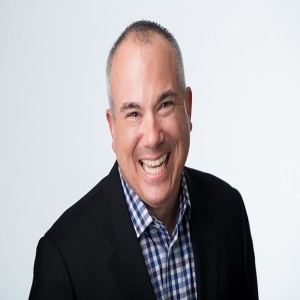
Thursday Oct 03, 2019
Stacking the Deck with A-Player Talent with Kevin Lawrence of Lawrence & Co.
Thursday Oct 03, 2019
Thursday Oct 03, 2019
Today we are making a commitment to hiring excellence! To do this you must change your mindset, your expectations and your hiring method. The transition away from “best practices”, what everyone else is doing, is necessary to stand out.
Fill your staff with A-players! Develop your B-players into A-players and significantly increase the likelihood that your company will crush it. Today’s insight is the spark to set your standard in building an amazing company.
This show is proudly sponsored by Vidoori
Today’s Quote:
"Individual commitment to a group effort - that is what makes a team work, a company work, a society work, a civilization work. " - Vince Lombardi
Guest Bio:
Kevin Lawrence is the CEO of Lawrence & Co. CEOs typically place their first call to Coach Kevin with a crisis to solve. They stay because of his business acumen and no-holds-barred, tell-it-like-it-is style. Kevin’s worked with hundreds of CEOs and executives, helping them to break through business challenges, grow their companies and find personal success along the way.
These experiences inspired Kevin’s book, Your Oxygen Mask First, in which he reveals the 17 habits every leader must know to transcend the perils of success and achieve even more.
Today we are going to cover:
- The philosophy behind poor hiring practices (attitude)
- What A, B & C players look like
- Implementing a methodology to fill every position with A-Players
The all too common Philosophy of most startups
- Aspirations are equivalent of a beer league hockey team with NHL aspirations
- Entrepreneurs drag mediocre people with them and they wonder why they don't win
- In your own business, you don't think it applies to them, yet if they were able to take
- Founding entrepreneurs
- Don't have good mentors that they
Understanding what the Hiring perspective should be
- Most leaders don't scrutinize hires enough
- Discipline and rigor around the hiring
- The result from hiring quickly in the beginning
- As they become a bigger business they use the same methodology
- Insanely critical all of the time. Each hire can make you or break you… especially you as a leader
You Must understand this
- True A-players are being taken care of…. It is a lot of work to dislodge them. A-players never get laid off.
- Patterns of A-players
Rick’s Input:
- Treat every hire like it is a Million dollar hire, changes your perspective on time investment to the hiring process
- Keep raising the bar!
How do we make the transition to hiring excellence?
- You Have to believe that you deserve and NHL caliber team
- The belief puts you into a different trajectory
- Review each of the key people in the business:
- A, B or C player - Philosophy is A to stay
- Strive for excellence. With a quarterly portfolio review
- Calibrating talent every 90 days. Take action, give feedback, support, development,
- -treat your review like an investment portfolio
How to Identify the A player
- Crystal clear on what you are looking for- a mathematical job description
- Get to know who they are… before the offer. It may take 3-4 hours to dig deep
- Understanding character, patterns
- Being able to rate someone accurately during the interview
- Steps Implementation
- Have an expert in the methodology
- Require key hire diligence & review the summary report before the hire.
- Reference checks- Talk to the managers only…. A-players easily give references and the managers will talk to you
- *mediocrity cant find their bosses
- *** Default to having an amazing team
- Find the smartest people who have built systems and follow them
- Earn the right to tweak a system. Systems work when you follow them completely, Humans screw it up.
- Relentless execution of the basic principles
Rick’s two cents:
- Deep behavioral discussion
- Gathering evidence of success
- Situational / Hypothetical interviews are a waste of your time!
Key Takeaways:
- Need amazing people to create amazing performing company
- Deep scrutinization is critical for all hires and promotions - these are million-dollar decisions.
- You have to focus on your own strength & Resilience to have sustainable success
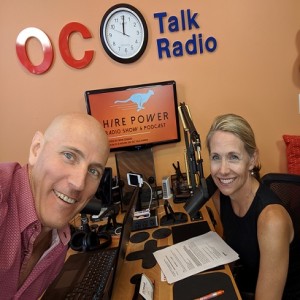
Thursday Sep 26, 2019
Thursday Sep 26, 2019
The work you must-do if you want to see innovation and growth. This work involves letting your inner kindergartner come out. Because this is when people do their best work!
This show is proudly sponsored by Vidoori
Today’s Quote:
"The Universe is one great kindergarten for man. Everything that exists has brought with it its own peculiar lesson."
- Orison Swett Marden (Founded SUCCESS magazine in 1897)
Guest Bio:
Summer Anderson is the Managing Partner of MiROR Partners. She has been spearheading executive search around the globe. With a proven track record of shaping executive-level leaders, guiding leaders to immediate clarity, and simplifying complex organizational matters, she is a trusted advisor to senior executive clients and candidates at Fortune 500 security, technology, and fast-growth companies. She is known for her solid network of long-standing relationships and as a catalyst for funding partnerships.
Today we are going to cover
- Why it is important to let your inner Kindergartner take the lead
- How to create an innovative environment
- The 3 step process to foster innovation
Why is this Important?
- When working together a group of kindergartners outperforms a group of MBA's!
- CEO- out of comfort zone. Anytime we are in default, we are not in their best selves,
- big mistakes are made outside of our comfort zone and operating in default.
- Trust on team is more attractive to everyone
- Superstar hired will stay when the environment is safe
- Curiosity, wonder, sparks innovation
To create the right environment for amazing things to happen
- Have to be willing to prep the soil
- Get minds clear enough to operate as a kindergartner.
- Being willing to empty yourself rather than fill your head with too much.
- Listening with care. I'm gonna get curious about what you said
- Squeeze all the nuances out of it
Innovation Codified
1) Build Courage: Leadership must lead with courage in order to inspire trust neither #1 or 2 will occur. If thinking differently and openly sharing ideas isn’t safe, it will never happen. The change begins with you.
2) Review Sacred Cows: Get your team to talk about the taboo topics. Examine your thinking. Get an outside party to facilitate and get to the bottom of ‘why’ things are the way they are. It’s more about thinking different. Apple was excellent about bringing this the forward. This is more about different perspectives. You
3) Add Diversity of thought. Take a long look. Is your team thinking differently? Or are you hiring just to increase your ratio of diverse team members?
Rick’s two cents
- Stay true to who you are: If you are a jerk, hire other jerks who can challenge you.
- Your best people will leave when they feel unheard
Key Takeaways:
- Be willing to look within and start with yourself
- Be willing to grow, get ready to help your people grow
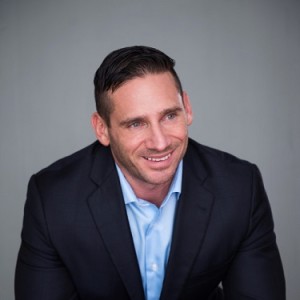
Thursday Sep 19, 2019
Thursday Sep 19, 2019
Today we are taking an honest look at your hiring record. Data does not lie!
The success or failure of your hiring is a direct result of your interview process. Everything from the messaging, the experience of the first contact through to the way the interview is conducted determines your hiring outcome. It is NOT money!!
A shift in mindset is needed to understand that people have options and your company is not as special as you think. You need to stand out. You can do this by providing growth.
This show is proudly sponsored by Vidoori
Today’s Quote:
"You have to create a track record of breaking your own mold, or at least other people's idea of that mold." - William Hurt
Guest Bio:
David Patterson is the Founder and Managing Director of The Kineta Group and TheSAPRecruiter.com, and also a member of Sanford Rose, a top-10 ranked world-wide retained search firm (Executive Search Review).
He is The SAP Recruiter, and helps CIOs, IT Execs, and Talent Acquisition Pros hire and retain the best SAP talent in the known Universe. In his 15 years as an SAP Recruiter, David estimated that he personally interviewed between 5,000-6,000 candidates for all levels to include Architect up through the C-Suite.
Show Highlights:
- Why it is important to really dissect your hiring record
- Understanding what success should look like
- Evolve your own unique process into an experience that attracts the right people
Why is it important that you take an honest look at your hiring record
Your Hiring record is the result of your interview process.
What data should be measured?
- Number of people interviewed to get to an offer
- How many people turned down your offer
- Last 10-20 hires
What a record should look like?
- Where people fell out… timing issues. The truth about taking too long, dropping the ball, the impressions you are leaving
- Self-actualization- following the pack,
- Different interview process- repel as much as it attracts. How can I scare people off? (the anti-sell) - The Crossfit sell
Rick’s Input:
- Retraction: Video interview is all good … one way video interviews- Bad Idea!
- Past performance is a key indicator of future performance
- TRUTH: Money is not the reason someone turned down your offer
- Data
- First Interview to Placement ratio
- Offers extended
- Accepted / Rejected
How do we fix a broken Hiring record?
Use the strategy to drive the message.
- Be polarizing to attract the people who love you
- The majority of people don't get what you do, the ones that do become believers
- Finding that career wound…the pain that they have become habituated too. That’s where you pivot!
- (but you need to first find those common pains that most candidates in your industry have, as well as develop the skill to elegantly bring that out in people during interviews)
Create a “Special Sauce” where you attract the people you want.
- Cult-like following. Special tribe
- Don't be afraid to repel the wrong people.
- People who are attracted to the mavericks
Assessment of why you hire the way you do.
- Not seeing all the right people out there
- Based on the job descriptions
- View on the JD flows into how to recruit
- How you onboard/retain them
Rick’s two cents:
- Understand your Candidate
- Accept that you are one of many
- Fill the gap in the person’s career
- Provide a growth road map
- Target specific people and nurture
- 4:1 Interview to placement ratio
Key Takeaways:
If you don’t want to be just another commodity employer, you need to:
- Be willing to take a step back and figure out, fundamentally, the pains, fears, and dreams that drive the people you want to hire (and recognize that you are selling a product that solves a pain)
- Be willing to draw pain and dreams out of the people you are interviewing (to see what makes them tick, in their heart)
- Be willing to be polarizing and repel as much as you attract, if not more so!
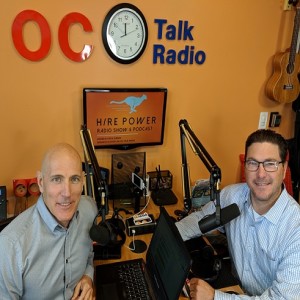
Friday Sep 13, 2019
Tapping into Veteran Talent Pools! with Brian Erickson of Vidoori
Friday Sep 13, 2019
Friday Sep 13, 2019
A lot of companies shy away from hiring veterans because they don’t understand the value that they may bring to the table.
Amazon, Google, Microsoft, Cisco & Walgreens have programs in full force but the majority of startups have yet to really get on board. The diversity in thought that comes from hiring a vet may be the competitive edge that your startup needs to propel your business ahead of your competition.
This show is proudly sponsored by Vidoori
Today’s Quote:
"We hire military veterans because they make great employees. They bring proven technical and leadership skills. They understand teamwork, and they're adaptable. Bottom line, hiring veterans is good for business."
Randall L. Stephenson - CEO of AT&T
Guest Bio:
Brian Erickson serves as the Vice President, Strategy and Solutions at Vidoori, Inc. He leads company expansion strategies bringing the Vidoori brand to the west coast. Brian has over 26 years of experience in Naval Aviation, Cybersecurity, Information Technology, Information Operations, Strategic Programs and sourcing/acquisition. Brian is a retired Senior Naval Officer (Captain/O6) with proven experience and expertise across numerous technical domains bringing a warfighters perspective to Vidoori’s mission of delivering excellence.
Brian holds a Bachelor of Arts Degree in Economics from San Diego State University, a Master of Business Administration (Financial Management) from the Naval Postgraduate School, a Master of Science (Information Technology) from the Naval Postgraduate School and an Executive Management Certification from the University of Virginia Darden School of Business. Additionally, Brian holds numerous defense and industry related certifications to include: CISSP, GSLC, CISSO, CISSM, DAWIA Level 3 PM, DAWIA Level 3 IT, CKM, ITIL.
Show Highlights:
- The benefits of hiring veterans
- Challenges in the crossover
- What is needed to hire veterans today
Why hire veterans?
- Advantages of hiring veterans
- Hard workers
- Trained
- All the same, competencies that civilians do +1
- Life experience
- Much harder workers, disciplined
Why do companies not hire veterans?
- Language Translation - understanding of Military terminology
- Skills Mismatch -
- Negative Stereotypes / Bias - too rigid, formal, chain of command
- “Alpha” mentality
- Aggression / PTSD / disability fears
- Cultural Fit
- Fear of future deployments
Rick’s Input:
- Military ranking & conditioning
- Diversity in thought
- Requires a shift in mindset
- Impactful behavior transfers
How to Successfully hire Veterans
Preparation is Key!
- Process & Structure
- Checklist oriented
- Understand rigidity in the government process
- Outline the Framework, Training & Direction
Rick’s two cents
- Embrace the differences in Mindset
- Seek to understand the mindset
- More important to have a structured interview process
Key Takeaways:
- Have an established interviewing team that works well together; bring in a technical “ringer” as required to round out the depth and breadth of conversation.
- Hire military...highly technical, lots of experience, trustworthy, bang for your buck
- Transactional vs relational (stick with relational)
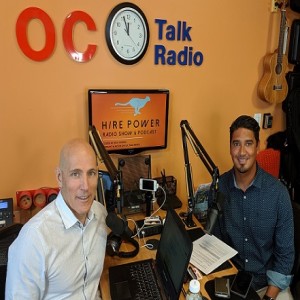
Thursday Sep 05, 2019
Thursday Sep 05, 2019
Have you ever looked at a resume and thought this person is perfect! Only to find out after you have hired them that the person is a total mismatch to your organization. This is the result of being “Shopping Hungry” for the hire.
This is totally avoidable! By keeping the interview process consistent regardless of who the person is, where they came from you will serve you well!
NEEDING to fill a seat is not enough evidence to warrant making a hire!
Today’s Quote:
"If you take shortcuts, you get cut short." - Gary Busey
Guest Bio:
Kevin Castle is the Managing Partner and Co-founder of Technossus. He is responsible for motivating and leading an organization of technology experts who are laser-focused on exceptional client outcomes.
A highly engaged entrepreneur, Kevin has driven the Company’s strategy and supported the expansion of Technossus’ footprint from one office in Irvine to three worldwide. The firm has been recognized three times by the Orange County Business Journal (“OCBJ”) as one of the best places to work and four times by INC 5000 as one of the fastest-growing companies in America.
Show Highlights:
- The pitfalls of being “shopping hungry”
- How to avoid this pitfall
- A process to cure being shopping hungry
What is “Shopping Hungry” for last-minute hire? Why does this happen?
- Challenge - at the time you need to hire someone, you scramble to find them, make a hasty decision and do not go through all the of the checks and rigor to make sure they are the true long term fit and strategic hire for you
- Short cut the interview process
Why is it important not to shortcut the interview process when hiring?
- Hiring the right culture Fit
- Challenge - you hire someone who has the skills, knowledge, experience - but fails to make sure that they are the right culture fit. Hard to deal with, hard to get them out, and often can have a lasting impact of damage made with internal and with external people who interact with your company.
- Personal - hired someone that was not rooted in the same values - meaningful relationships, trust, sincere kindness.
Rick’s Input
- The purpose of the interview… The Truth!
- Short cuts get cut short … like the quote
How do we solve this problem?
- Acknowledge that you were the culprit of the mistakes made
- Solution - spend 5-10% of your week passively recruiting. Meet key persons, spend time networking and reaching out to people to learn more about background, desires. When you need to bring someone in, then a couple of friendly calls can get you moving quickly. Networking with people who may know other people like you may hire is a key strategy to get some great referrals
- Side benefit - a great way to get market aware (can teach you a lot). Also helps to give you a broader breadth of the skills in the market for the position.
- Solution - be clear
- Important - to only hire people that represent your values
- Trust your gut
- Incident - several years back. Hired someone that I just knew was not going to work well. Did not click with me, and could not get through and understand why. I could not articulate what it was that made us not connect. The team was ecstatic in interviewing this person, all thumbs-up, and ultimately hired this person.
- What happened - It completely did not work out. Had to let them go and nobody was happy in the end. Did not get the job completed, trust was an issue from the start, had to let them go.
- Important - to click with the people who work for you. To start off with a genuine interest in someone is critical for them to be successful.
Having to let someone go who is loved by all - but is not performing
- Solution - having metrics-based performance tracking - we have this @ every single level in our organization - where goal setting, outcome, performance can be quantified - at times this ends up having to trump likability which is very difficult for people, companies, for us all.
- Have specific questions around the culture.
Rick’s two cents
- Performance-based metrics.
Key Takeaways:
- Passive recruiting- Network 5-10% of your time
- Cultural alignment matters
- Trust your gut

Thursday Aug 29, 2019
Thursday Aug 29, 2019
We have all experienced it….Trying to coordinate calendars to accommodate an interview. It is a BIG time suck from someone’s day!
How to eliminate some of the administrative tasks and shift into more productive work that moves your business forward.
Today’s Quote:
"There's a lot of automation that can happen that isn't a replacement of humans but of mind-numbing behavior." - Stewart Butterfield
Guest Bio:
Olivia Melman leads DigitalOcean’s Recruiting Operations team, having joined the company as the People team’s first Program Manager in March 2017. In addition to managing the Recruiting Coordinators, Olivia is focused on automation and collaboration within the full-cycle recruitment process, and owns all data and tooling associated with recruitment strategy. She also manages DigitalOcean's external partnerships with talent acquisition and branding vendors, and runs point internally on headcount planning alongside the FP&A team. Olivia started her career in Financial Services as an HR Management Analyst, and most recently, was a Customer Success Manager for LinkedIn’s Talent Solutions business.
Show Highlights:
- The issues around Calendar management
- The challenges with just coordinating & scheduling interviews
- Solution to optimize your interview calendaring issues
What are the challenges in scheduling interviews today?
My team’s responsible for coordinating interviews -- at a really high volume (averaging 200 hires a year), but the challenge we’ve run into is really how to maximize time in meaningful ways.
- Limited interviewer availability and limited candidate availability -- coordinating calendars effectively becomes really difficult
- 70% of my team’s days are spent browsing Google calendars to schedule interviews (more specifically, onsite interviews where we are bringing candidates in to meet several people from our hiring teams)
- Interview scheduling ties to candidate experience, employee experience (hiring teams) and the experience of those on my team (it’s frustrating staring at Google Calendar all day!)
Why is it important?
- Time spent where people are not contributing their maximum potential/value to the team -- once you’ve mastered how to schedule, you don’t learn from each instance
- At this kind of junior level role, it’s important to me that my teams gaining relevant experience beyond the task at hand (scheduling) -- and is in fact as an operations leader, I need them to gain system implementation experience -- program management and change management experience so that I can effectively delegate down the road
- (personally, I want to make sure that everything my team is doing is contributing to their individual growth and development).
- Navigate gaps- communication upfront
Rick’s Input:
- Always one person- have an alternate
- A bench of back-up dancers (interviewers)
How do we solve this problem?
- Using a new technology platform to automate interview scheduling and eliminate the “calendar Tetris” of trying to schedule onsite interview panels / back to back interviews.
- The tool essentially enables the user to build the interview panel or team (select interviewers, interview duration, format, location -- set times) and then the tool does the work for us by using AI to pull in Google Calendars and find time slots where the selected interviewers are available back to back and for the assigned formats/durations.
- Cut to 40% of the time using system administration skills rather than scheduling role (30% time savings)
How did we go about finding a solution?
- Discovery and assessment -- figuring out exactly what the workflow looks like now (in terms of people, process, and systems)
- People -- do we have the right people executing? Who are the stakeholders? Is that who they should be?
- What activities are these individuals working on that isn’t adding value? For example, what is being executed that doesn’t bring 1) learning 2) development or maybe 3) revenue or however YOU define value for your org
- Let’s break out those individual activities we identified and first, look internally to solve with automation (an example where we did leverage internal resources was with a web-based candidate resource library -- so that we could stop attaching docs to every email and updating links in a zillion place, just have one link do.co/candidates)
- If nothing internally available, then go to market to see what external vendors or technology partners exist
- Vendor selection: Speak to DO philosophy on vendor selection (simple and elegant, ability to inform product design, contribute to vendor success) → this led us to Interview Schedule!
Rick’s two cents:
- Standardize a process where anyone can step in
- Assign questions to each person in the process
- Evaluate based on the company values
- Pre-schedule days for interviews
Key Takeaways:
- People, process, then systems -- nothing will work if you don’t have the right people in place
- Implementation -- making sure you think through user adoption and change management
- Metrics for success -- any time you are investing in automation ($$), making sure you have a clear vision for what success looks like
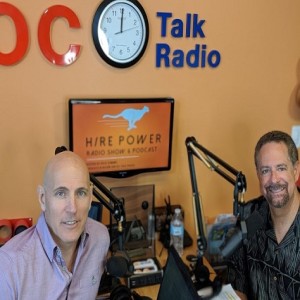
Thursday Aug 22, 2019
Thursday Aug 22, 2019
We are talking today about the importance of keeping your people informed about what hiring is taking place and allowing your people to become brand ambassadors!
The benefits of keeping your people informed are tremendous as employee referrals harness the highest ROI. Reduce time to hire (55%), Cost of Hire ($3k), improve the quality of hire by 88% and increase retention @45% (after two years).
This all starts with continually marketing internally first, then expanding outward!
Today’s Quote:
"Internal marketing is probably much more important than external marketing. That's even more true today than it's ever been."
- Tom Stewart
Guest Bio:
Angelo Ponzi is the Founder & President of The Ponzi Group. He is a marketing and branding strategist that works with small to middle-market companies as their fractional Chief Marketing Officer in defining market opportunities, developing competitive profiles, audience personas, brand realignment, and strategies, to strategic, integrated marketing plans that help businesses compete in an ever-changing marketplace.
He focuses on three strategic pillars for success: Insights, Brand, and Plan to develop effective and efficient programs for building enduring brands and sustainable business growth.
Angelo is also the host of the radio show/Podcast, Business Growth Café.
Show Highlights:
- Employment Marketing
- What is it? Why is it important
- How to Structure a solid marketing campaign
What is Employment Marketing?
- Promotion of the company’s mission, values, products/services to its own employees
Why is it important?
- Improve employee engagement
Problem
What are the challenges facing today
- In most companies, this is non-existant
- Marketing is left up to recruiting
- When it comes to marketing, companies focus externally and do not educate everyone internally.
- Internal marketing
- Creating brand ambassadors for hiring
- Everyone has a role in marketing, and need to get involved in what is happening. Get everyone to embrace what they are doing.
- Huge risk of alienating potential hires because they do not know how to market the company. Internal communication, internal operations, functionality
- Avoid potential issues
Who’s responsibility is it?
- C-suite & Marketing
- Recruiting
Rick’s Input:
- Internal referrals are your strongest source of talent
- Informed employees are continually on the lookout
- Required Talent Acquisition & Marketing collaboration
- Cultivate a referral program
- Brand messages reached 561% further when shared by employees vs the same messages shared via official brand social channels (Source: MSLGroup)
- Content shared by employees receives 8x more engagement than content shared by brand channels
Ingredients for good candidate Experience
- How to deploy an internal marketing program
- Set up a monthly meeting- internal chat or social platform to
- Get information to everyone
- Make the messaging visible as possible
- Internal email
- Exposure to marketing materials
- Educate employees on how the work they do fits into the overall business to build a better understanding of their contributions.
Steps for executing a plan - Process
- Conduct an internal survey to better understand the level of knowledge
- Develop an internal marketing plan, similar as you would for external marketing
- Empower an individual to be the internal marketing champion...not just an additional duty, but true responsibility with KPI’s
Rick’s two cents
- Align recruiting & marketing
- Cultivate a referral initiative
- Encourage promotion through social channels (Gamify)
Key Takeaways:
- Incorporate information about the company, markets and brand into the on boarding process
- Update employees at least once a quarter, if not monthly on any changes that can impact their jobs and/or give them the ability to talk about the company beyond their function
- Make sure employees are marketed to first, so they are aware of campaigns prior to the external marketing activities. This builds loyalty and inclusiveness among the staff.

Thursday Aug 15, 2019
Cracking the Bootstrapped Startup Hiring Code with Meetul Shah of DemandMatrix Inc.
Thursday Aug 15, 2019
Thursday Aug 15, 2019
Why is raising capital more celebrated than building a business that is actually profitable? It may be a smarter play to join an actual business rather than a "concept company".
A bootstrapped company should be more attractive to people but for some reason, it is not. Today we are out to prove that driving a good business does not require venture capital and You do not need VC money to attract and hire the right talent.
Today’s Quote:
"Bootstrapping is a way to do something about the problems you have without letting someone else give you permission to do them."
- Tom Preson-Werner, co-founder of Github
Guest Bio:
Meetul Shah CEO of DemandMatrix, Inc., is a tech entrepreneur, having successfully built 3 companies prior to starting Demand Matrix. His “entrepreneurial” vision and inspiration comes from his desire to create and bring products to the marketplace that can help solve problems he himself has faced in his career. The combination of his years as a successful entrepreneur combined with his tenure at Microsoft has given a strong shape to his business acumen and technical expertise.
Meetul has been featured in several major publications, like CIO, NYT, WSJ, Washington Post, Huffington Post, Venture Beat, and more.
If you were to ask him to introduce himself in less than 5 seconds, he’d probably just say he’s an idea machine, health freak, and wine lover! He is deeply passionate about Sales and Marketing Productivity given his time working for and selling to enterprise companies like Microsoft, DocuSign, Google, Cisco.
Show Highlights:
- Bootstraping! What is it?
- Challenges & benefits to hiring in this type of organization
- A Process to hire when you do not have money to burn
What is Bootstrapping?
- A bootstrap is a business launched by an entrepreneur with little or no outside cash or other support.
Why Bootstrap your company?
- When you take the capital, you take more risks in hiring. You make bad hires under the pressure of VC money.
- The pressure to hire outweighs common sense.
Challenges faced while hiring
- Viewed like you don't have money
- May not be able to afford people because salaries are supported by the business.
- Lowering standards because people are not biting.
- Desperation takes over and you hire whoever you can.
- Hiring is misunderstood in startups
- False perception- you have money, you hiring
- Early-stage it costs the company a lot when you make a bad hire!
Rick’s Input:
- VC money opens doors but it
- Attracting people who are brainwashed by funding yet you will probably won't get a dime when the company exits
Solutions (what you learned):
As an Entrepreneur, where to Start?
- Understanding yourself, who you are
- Supplement & compliment people to support core values.
- Hiring community understand and can divide and conquer
Structure your process to allow for successful hiring
- Hire a really good TA person
- Build a recruiting process.
- -find a recruiting process, glassdoor
- Don't be desperation and be non-bias and do not ignore the warning signs
- Badmouthing employer, blaming others, sharing things they should not share (internal information), bad culture, bad boss
Rick's Process:
- Determine what the business needs, set performance metrics
- Build interview questions to gauge with company value alignment
- Formalize an interview structure for “Purpose”
- predetermined questions
- Timed
- Behavioral-based interviewing (like Amazon)
- Communication/Feedback channel
Key Takeaways:
- 1. Know yourself, and the values you care about
- 2. Pay attention to the warning signs
- 3. Build a solid business foundation so you can use VC money "as a fuel in the fire" to align incentives/goals
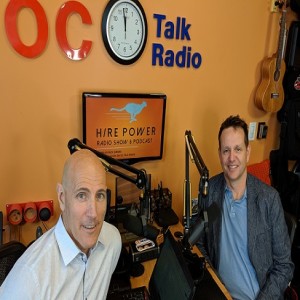
Wednesday Jul 31, 2019
Ryan Malone: Building a High Scale, High Performing Remote Company!
Wednesday Jul 31, 2019
Wednesday Jul 31, 2019
Today we are talking about building a high scale remote company. Try this on for size, a 75-person company without an office! The advantages are different than you might think yet you really must be mindful of who you are hiring.
A remote workforce is a time to talent advantage not a save money advantage
Today’s Quote:
“Most of us spend too much time on what is urgent and not enough time on what is important.” — Stephen Covey
Guest Bio:
Ryan Malone is the CEO of SmartBug Media, which he founded to give clients amazing results and employees a lifetime of memories. Before SmartBug, Ryan ran marketing at several venture-backed and public companies. Ryan enjoys the gym, live music, people watching, and playing terrible guitar. He lives in Orange County with his wife and two amazing daughters.
Show Highlights:
- Challenges & benefits of a remote organization
- The importance of cultural fit
- Interview structure for hiring remote employees
Challenges:
Why??
Building a business is hard enough. Why make it more difficult by building a remote business?
- Be part of the team and be part of the family
- Hire better and faster by being able to hire talent from around the country
- Only option to build the tribe
Talent Strategy:
- Recruit ahead- create a waiting list. Always interviewing.
Building a Marketing culture:
- People are bought in when they join
- Structure work culture
- Deep challenging relationships
- First people hired should be a marketing/pr person. Attract people who are already qualified to the process.
- Peer-based reference reviews prior to the interview. Inbound recruiting, skill survey
- Video submissions
Benefits of building a remote workforce:
- The talent pool is vast
- Work/ life integration-
- Flexibility
- The world will not end if you are not at your desk
Interview process:
- Inbound resume flow (into ATS)
- No headhunting
- ATS- kicks out instructions to make a video to submit
- Schedule an interview
- All video interviews, mix of behavioral interviewing
- One person focuses on skills, values, tools, cultural
- Look for Clean work environment, evidence of value, perseverance, curiosity
- Are you an additive to the culture?
Interview structure:
- A 30-minute call with everyone on the team
- Flexible work model
- Psychological permission be available for your customers/ team but the schedule
Key Takeaways:
- Hire marketing & pr first
- Use video as a screening tool
- Reference peer review early in the process
- Designate people to be experts in the interview process
- Always be interviewing
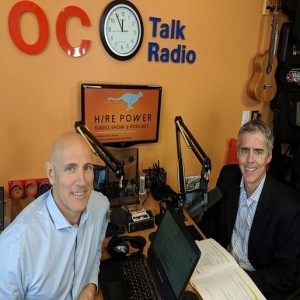
Thursday Jul 25, 2019
Martin Herrington: I'm Down With H1B... Yea, You Know Me!
Thursday Jul 25, 2019
Thursday Jul 25, 2019
Going old school with the title, don't judge!
STEM (science, technology, engineering & mathematics) hiring today is brutal as there are just not enough people to support the demand. Without bringing policy into the conversation we are going to tackle the challenge of how to hire around the limitations.
Today’s Quote:
"To maintain their own competitiveness, workers need to attain and stay current on the qualifications needed to advance in a constantly evolving economy." - Elaine Chao - Secretary of Transportation
Guest Bio:
An avid entrepreneur from University onward, Martin Herrington established a service industry business before graduation, partnered a real estate development company, and co-founded The Herrington Teddy Bear Company to move to the United States, creating a multinational sensation. As Chief Financial Officer and Managing General Partner, Martin was responsible for all aspects of the business including Sales, Production, HR, IT, and operations of the corporation before seeking additional challenges. Mr. Herrington holds a very distinguished record of service in non-profit organizations in Canada and the U.S. with his most recent focus growing the Youth Motivation Task Force of Orange County. An entrepreneurial graduate of the prestigious Haskayne School of Business at the University of Calgary with a Bachelor of Commerce, Martin also advanced his education credentials into the Series 7 and Series 66 US Securities Licenses and held the Wealth Advisory Associate role with Morgan Stanley before becoming a Financial Advisor as part of his creation strategies.
Martin is currently a founding partner and Vice-President with TEKCORUS Consulting, a Recruiting & RPO Agency based in Orange County, California specializing in recruiting high tech talent Recruitment Process Outsourcing Services. Martin has been a Toastmasters International member for many years, and speaks regularly at community events, business meetings, and consistently competes in Toastmasters International speaking contests.
Show Highlights:
- What an H1 is
- The benefits & challenges to hiring
- How to effectively hire someone under H1 status
Problem:
What is an H1?
- Long Term but not permanent work authorization / visa that is sponsored by employer.
Benefits of Hiring an H1
- Already has an h1b-
- wider pool of talent
- 3rd party intervention
- Better technical skills/expertise
- Better rate
Things to be Aware?
- Beware of agents
- Lying
- Different people showing up for different parts of the interview
- H1B is looking for a path to Green Card only
Quirks of Engineers - Knowing the individual to prepare for the interview
- Biggest challenge
- -Technically sound
- -asking basic questions
- -build a database of technical questions
How to sniff out the quirks, personality & culture fit
- Problem lies where
- Creating the right environment for an interview
- Knowing enough about your clients to be able to properly prepare candidates for interviews
Rick’s Input:
- Hire people who are already holding an H1b- Transfer
- Timing is S L O W - elimination of premium processing
Steps to Hire H1’s
First step - Go over resumes
- Watch for duplication - some resumes look too “familiar” or even identical!
- Look for excessively long resumes - ie. filled with same info. at each job experience
Second Step - initial phone call - screening for good communication skills - can be a challenge and if you cannot understand them, then your client or the team will likely not be able to either
- Go over each job experience by asking what they did and what technologies were used - making sure that it matches the resume, dates, etc.
- Listen for delays or background talking; candidate should know all details her/himself
- Confirm relocation details - do they have friends/family in New City; what is the likelihood that they will actually show up in New City? (ie. verify “Relocation Anywhere” and vet out tire kickers.
Third step - in-person or Skype interview
- Making sure the same person from phone call shows up for the in-person/Skype
- If by Skype - Watch for lip syncing, other people in the room speaking or signalling;
- Screening for communication,
Fourth step - get commitment for duration of contract;
- If necessary, contact Agency holding Visa to confirm
Rick’s two cents
- Communicate!
- No assumptions
Key Takeaways:
- Be diligent in your communications
- Find out Visa details; request copies of Visa/paperwork; allow extra time!
- Coach candidates through interview process
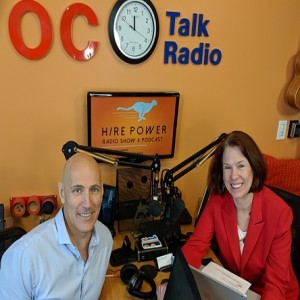
Friday Jul 19, 2019
Friday Jul 19, 2019
The usefulness or uselessness of AI & Employment branding in Recruiting.
Today’s Quote:
"This is what Steve Jobs understood: Brands are defined not by the best thing on the product but by the worst thing."
- Robert Scoble
Guest Bio:
MJ Shores is a Chief Marketing Strategist and technology trends analyst. With a rich and diverse professional background in public policy, business, and technology, she is sought out for her far-reaching, cross-industry and cultural insights. MJ has been a panelist and keynote speaker at industry and special interest events around the globe. She has been featured in Business Week, Financial Times, Wall Street Journal, MSNBC, China Post, and other media.
MJ developed her expertise through a career that spans working as a policy analyst at a think tank, serving in leadership roles at top global business schools (e.g., Wharton School of Business, UCLA, University of Moscow – Russia), and leading marketing efforts at technology firms (e.g., SaaS software, digital streaming or OTT), and others. She is involved in the local business community, where she is an acting Senior Strategic Advisor for Executive Next Practices (ENP).
Show Highlights:
- The role AI plays in employment branding & hiring
- What works & what doesn’t
- A road map of where & how to invest your time
Problem:
Challenges:
What is the relationship between AI & employment branding?
- Your brand is created by the experience people have with your brand. AI helps you determine the truth between your perspective and what the market thinks.
- How you brand your company and serve your prospects.
Where is it working?
- Routine functions *** open up time for HR to engage with People ***
- Extracting data
- Automated process for scheduling & auto response
- Monitoring your brand for good/bad feedback
Where does it now work?
- Tasks that require judgement
- Inferences between intent and keywords
- Still really in beta, not quite ready for primetime
Rick’s Input:
- Administrative tasks
- Resume screening- Both fail here
- Does not engage people
Solutions:
How to best use AI
Roadmap
- Spend $ on Training HR to identify and use technology.
- Rely on IT to identify and recommend tools. But IT does not understand Recruiting problems
- Start with a simple chatbot to automate scheduling and response to website querrys/candidate questions
- Social listening tools- candidate identification/sourcing
- Red flag/background check piece as a final step
- ethics & morality of this step
Rick’s two cents
- AI cannot replace human interaction!
- You still need to pick up the phone and find out the truth
- Do NOT rely on tools or resumes to filter people in our out!
Key Takeaways:
- Brands are No Longer Owned by Companies (in an era of skepticism of companies and traditional marketing, the voice of potential candidates and the public are central to your brand)
- AI Enhances the Candidate Experience & Talent Acquisition
- AI Will Enable HR to Become Human Again
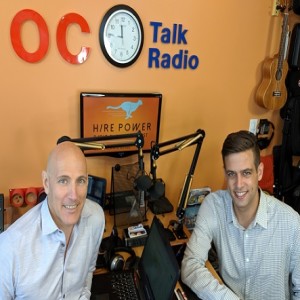
Thursday Jul 11, 2019
Ben Mones- Need to Fill VS. Cultural Alignment
Thursday Jul 11, 2019
Thursday Jul 11, 2019
The Battle between your Need to fill a role vs. hiring for cultural alignment.
More thought needs to go into “Who” you are going to hire than “What” you are going to hire. Meaning proven performers with transferable skills, not shiny objects.
Today’s Quote:
“Acquiring the right talent is the most important key to growth. Hiring was - and still is - the most important thing we do.”
- Marc Bennioff, Founder, Chairman and co-CEO of Salesforce
Guest Bio:
Ben Mones is the co-founder and CEO of Fama, an AI-based solution that identifies problematic behavior among potential hires and current employees by analyzing publicly available online information. He founded Fama in 2015 to address the needs of organizations everywhere that are grappling with the challenges of protecting their workplace culture and preventing harassment.
Prior to Fama, Ben held a number of executive roles at a variety of startups in the Bay Area, including Acceleprise, an independent accelerator focused on enterprise technology, where he served as Entreprenuer in Residence as well as Lanetix, a leading provider of cloud-based customer relationship management platforms as director, revenue operations. He also spent two years at content analytics and insights company Chartbeat. Ben has been tapped as a guest lecturer at MIT Sloan School of Management, UCLA Anderson School of Management and USC Marshall School of Business, and has also been featured in CNBC, Fast Company, Los Angeles Times, TechCrunch and the Wall Street Journal. He holds a Bachelor of Arts from Vanderbilt University and is based in Venice, California.
Show Highlights:
- Why & How culture shapes your business
- Ego over common sense- Hiring rock stars
- Lessons learned and a structure to follow
Problem:
Why is it important to invest in culture?
- Shaping the culture of your business.
- Human behavior drives business outcomes.
- The virtue of power, ability to destroy or drive excellence
- When you need a function desperately filled, how do you balance your need to fill with the cultural value
- People want to align with products and services that they are passionate about
Why does Ego make decisions over common sense?
Anybody with a legitimate amount of responsibility makes a difference.
Rockstar engineers, leaders, need to fit into the organization, not the other way around
*** first-time founders Story:
- They decided to bring in some rockstars. Someone to groom.
- Didn't really fit the culture, demographics, hustle & grit. They went for the big dog name!
- Knew almost immediately and he took a position of superiority
- Hostile, no empathy… what they thought was not the reality
Lesson Learned
- Hired but got rid of that person quickly.
Rick’s Input:
- Cultural alignment/values alignment increase productivity
- One wrong egg
- Hire Performers, not “Rockstars”
- Rockstars
Solutions:
What road map should leaders follow?
- Get to know yourselves first. What is important to your business to ensure your success, mission & values to drive success. Team-based decision
- Structured interview process. Strong candidate experience, all voices/perspectives are heard in the decision process… treat each person like a new hire from the very moment they get in contact with you
- If you think you have talked to enough people, talk to a few more.
- Confirmation bias
- Be swift. Hire slow, intervene quickly! A closer look on the first 60 days. Course correct early on! With more transparency
- Driving synergy is more important than putting a rockstar in a seat
Rick’s Framework
- Treat each Person as if they are your only person
- mindset eliminates bias
Key Takeaways:
- Human behavior drives business outcomes
- Before identifying the talent that can help drive your business forward, critical to dig-in and understand the values and culture drivers within your business.
- Intervening and course correcting is an easier option than you might think...terminating a person is a last resort.
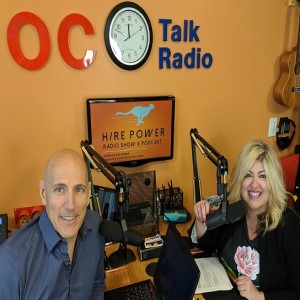
Friday Jul 05, 2019
Lorraine Ladd: Learning Your ABC's. Always Be reCruiting!
Friday Jul 05, 2019
Friday Jul 05, 2019
That's right people, today we are talking about our ABC’s!
The reality of the talent market. Creativity and Contact are the keys to winning talent. We are going to clue you in on where the gold nuggets are and why you are missing out on great people.
Today’s Quote:
"Great vision without great people is irrelevant." - Jim Collins - Author: Good to Great, Built to Last
Guest Bio:
Lorraine Ladd is the Associate Director of Talent Acquisition for alliantgroup.
She is an experienced sales and Talent Acquisition executive with a demonstrated history of working in the staffing and recruiting industry. Strong professional skilled in Customer Acquisition, Sales, Executive Search, Customer Relationship and Executive Coaching. Lorraine started her career while in college in radio and was a successful radio morning show personality before deciding to go into the world of staffing and recruiting.
Show Highlights:
- Why you should always be recruiting
- The Truth about responding to your job postings
- Where to find great people now!
Problem:
Bold Statement: Recruiting is easier today than it ever has been!
Why is it important to be continuously recruiting?
Creative ways to recruit talent
- Not enough talent - Why?
- Low unemployment, not tapping into the right pools
- Active candidates
The Truth: where you are missing people … about responding to Ads
- There really is enough talent, people are just not tapping into it
- A lot of people that are out of work 50-65 can't really find a job as a white male.
- Perception: Less flexible , set in their ways
Rick’s Input:
- Requirements are FLEXIBLE
- Look for reasons to screen people IN
- My experiment…. Sent out resumes
Solutions:
Where to find good people now?
- Unexpected places to recruit talent
- Retail, cold calling, conferences
- Using every tactic you can
- Pick off the 50-65 talent pool
Rick’s Answer
- You are missing the people closest to you
- Applicants, former applicants, former employees
- Target Passive Talent
- Requires different positioning
- All about “what’s in it for them”
Key Takeaways:
- Always be Recruiting
- Hire people, not roles
- Network
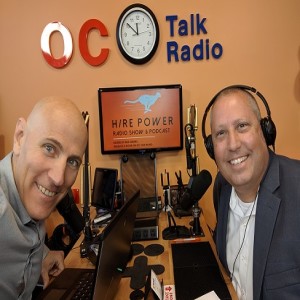
Thursday Jun 27, 2019
Thursday Jun 27, 2019
Engagement!
Well, not the type of engagement you might be thinking of.
Engagement in the business sense. Employee engagement is the one critical element that leads to the success of your business! Which I believe starts from the first point of contact with your organization… yes before someone is hired!
Today’s Quote:
“Not what you say, not what you do but how you make people feel.” - Maya Angelou
Guest Bio:
Steve Higginbotham is the Branch Manager of Volt Workforce Solutions. As an executive business partner and inclusive leader, Steve brings two decades’ of experience leading organizational transformations with leading companies. Changing the way Staffing Companies engage with their customers is vital. Having a deep connection with your business and an inclusive approach will continue to add value through a Total Talent Management partnership. Steve has expertise in Technical Recruiting, Business Development, Technology Consulting and Human Capital Solutions. He continues to deliver immense value to companies and business leaders through his strategic partnerships. Steve believes in a customer service approach for business success.
Steve has experience leading multiple types of organizations from Fortune 100, mid-market, private equity, & VC backed start-ups. In addition, Steve has developed 15 different divisions within eight different businesses while managing large business units & increasing enterprise accounts. His track record includes leading, coaching, mentoring and developing people into highly successful business leaders.
Steve has spent his career aligning business professionals with career opportunities. The value that he brings to companies identify with their strengths and opportunities for growth. Steve's experience coaching individuals helps improve communication. He has also conducted numerous presentations to board members and C-Level professionals with highly respected clients and industry associations.
A people oriented leader who drives business collaborative to maximize team performance while mentoring & coaching individuals through aligned approaches to achieve desired results.
Show Highlights:
- What Engagement is, what it isn’t
- Why engagement is critical today
- How to engage people to create emotional attachment!
What is engagement and why is it important? Engagement
- How you communicate with your company
Hiring managers - I want to hire the best talent, retain top talent
- What happens in the middle from what you want vs what you are getting
The company gave 3 hours of training, no orientation, on the job training.
- Employees responsibility - Who owns engagement??
Problem
3 sides of the engagement - Who’s responsibility is it these days
- If a person is not engaged correctly, they are going to bounce quickly… first 30 days.
- The company needs to train leaders to be better leaders
- The dual partnership between the company's & managers
People leave quickly or they stay and are just there because of the paycheck
Belief in mission, vision values.
Outlining issues that you cannot control
- Employee: losing engagement with the job… nothing more that is being contributed
Rick’s Thoughts
- Engagement starts with your job posting, email or phone call
- Critical in attraction & retention
- When you care, you win
Human Contact is the key
- 1:75 people call back.
- There has to be a personal approach.
Steps to maximize engagement
- Sources are not recruiters…
- Everyone with at least relevant experience NEED to be called
- train recruiters on what needs to be asked
- Discuss career worth
- Poor career planning. No mentoring, support or growth
Once they start:
- Not scaling back on your onboarding process
- Social media posts are not onboarding
- Clearly, have a process
Train your recruiters
- What information to gather
- The importance of a conversation
- Reward finding gold nuggets!
- Create a hiring bonus for people who were passed over because of a resume but are actually good
Pick up the phone and call people!
Key Takeaways:
- Differentiate yourself from the standard hiring process
- Create a structured and standardized interview process
- Train your employees to be Talent minded
Remember in engagement – how you make the candidate feel is more important – please be genuine in your approach, efforts and ensure timely and responsive feedback – always
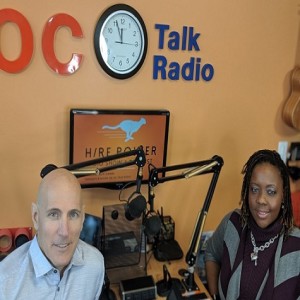
Thursday Jun 20, 2019
Dr Deena Brown: The Hiring Power of Relationship Capital! Or You’ve Been Cat-fished
Thursday Jun 20, 2019
Thursday Jun 20, 2019
Offers do not get turned down because of the MONEY… They are turned down because you failed to Understand who the person is and then demonstrate a mutual alignment of career & personal goals to your organization.
The Truth is People turn you down because of the lack of care!
Today’s Quote:
"Truth is, I'll never know all there is to know about you just as you will never know all there is to know about me. Humans are by nature too complicated to be understood fully. So, we can choose either to approach our fellow human beings with suspicion or to approach them with an open mind, a dash of optimism and a great deal of candor." - Tom Hanks
Guest Bio:
Dr. Deena C. Brown is the founder and CEO of DC Brown International, a leadership and growth company created to pioneer innovative strategies that transform organizations into culturally diverse ecosystems.
Dr. Brown’s trademark C3 Blueprint for Success provides a strategic roadmap for organizational leaders to communicate and connect across a multi-generational workforce. Dr. Brown’s body of work includes identifying and remediating leadership gaps that are barriers to innovation and growth.
After identifying a significant deficit of women in key leadership roles, Dr. Brown founded The Leadhershift Movement. The Leadhershift Movement is designed to help women shift the way they think about themselves as women and how they develop and respond as leaders. The Leadhershift Movement provides a safe-space for professional women to get clear about their Why, confident about the What, and consistent about the How.
Show Highlights:
- Our approach
- How we humanize the process to gain greater engagement
- Process to Engage
Approach to talent
What is the problem?
- Ignoring the root of hiring. The human factor, the relationship capital
- Mindset
- Ignore the obvious
- Organizational view- transaction
- We need to fill the hole
- Disconnect on the level of importance for the person they are hiring.
- Simple things are ignored…
- Dealing with a new population of employees that are looking for more than just a paycheck
Why Offers are really Accepted or Turned Down
- We lie
- Arrogance & Ignorance
Rick’s Input
Our approach is Selfish
- We have become conditioned to believe that the company is the PRIZE
- Not the case in this market
- Positioning is a one size fits all …. Centered around perks & benefits
- Listen to understand, not to respond
Solutions
- Being aware
- transparent
What have we done about this?
- Training
- Using the data to support the discussion
- Awareness
- Brought to the attention & proper training
- Learning to remove ignorance
- Identify the gaps (pain)
- Education shift in mindset
The 3 C’s
- Clarity in Vision, Mission, and Organizational Values that paint a clear picture for potential hires.
- Consciousness about what today's workforce values such as authenticity and relatability which is more influential than a paycheck.
- Consistency in regards to expectations and responsibilities of your workforce.
Rick’s Contribution
- Engagement starts before the hire is made
- Too much focus on the money & perks
- What a person desires is far more powerful
Key Takeaways:
- Care about the Human relationship
- Having clear values … are you who you say you are
- Provide growth opportunities to augment or improve a person’s life
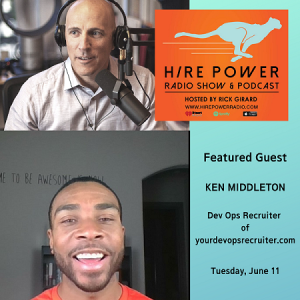
Thursday Jun 13, 2019
Ken Middleton: Thank You for Ghosting Me During Your Interview Process
Thursday Jun 13, 2019
Thursday Jun 13, 2019
Ghosting has come full circle now that it is a talent-driven market! There is no excuse for ghosting someone on either end of the hiring spectrum. It is a vicious circle that just breeds ill will.
Frankly, as a recruiter, company ghosting helps us to lure your best people out of your company.
Why do companies engage in such behavior? We are going to figure that out today!
Today’s Quote:
Your brand is your public identity, what you're trusted for. And for your brand to endure, it has to be tested, redefined, managed and expanded as markets evolve. Brands either learn or disappear.
Lisa Gansky
- She was the co-founder and CEO of Global Network Navigator, the first commercial website, which was acquired by America Online
Our guest today: Ken Middleton, DevOps Recruiter of yourdevopsrecruiter.com
Ken M. Middleton spent 10 years working for the largest IT staffing company in the world before deciding it was time to bet on himself. He started YOUR DevOps Recruiter to focus on connecting the best DevOps candidates to the best DevOps companies while evangelizing DevOps to the masses.
One way he accomplishes this is through his YouTube channel, The Dhub Repository, in which he posts weekly DevOps career tips, rants on what bugs him about the recruiting industry, and interviews DevOps SME's on different DevOps topic, in a segment known as DevOps Defined.
I have heard Ken rant about ghosting which is what makes him a perfect guest for today’s show!
Today we are going to cover
- What Causes Ghosting?
- How to Stop Ghosting
What is the problem?
- Clients ghosting candidates.
- No feedback or super slow feedback after long extended amounts of time with no updates along the way.
Why might companies’ ghost?
- Litigation fears
- Running too fast to pay attention
- Just lazy, inconsiderate or Arrogant …
What are the causes?
- HR representatives being overworked with numerous positions.
- Not considering quick and timely feedback is important to the candidate experience.
- Not have a clean process in place to follow up with ALL candidates, not just the ones they want to hire.
- Not giving a sh*t about candidates who they don't want to hire and just letting it fall by the wayside b/c of a feeling of superiority and snootiness towards candidates that apply to them. (i.e. they came to us for a job, right?)
Rick’s Two Cents
- Communication
- Ghosting occurs on the company side when companies are unsure about a person.
- Interviewers do not know the right questions to ask, how to dig so they did not gather enough evidence to make a decision.
- The key indicator of a bad hiring process.
- No clear structure on the information that needs to be extracted
- Without direction, people fall back on what they know.
Side Note: Your Bad Glassdoor reviews are a recruiter's best friend… How to treat people interviewing at your company
Solutions
- Stop having your HR representative work on so many positions at one time - Prioritize what's important...not what you MIGHT need down the road or later.
- Create an automated process to respond to applicants - There are CRM's that have this functionality where you can send multiple emails to candidates. Avionte, what I use, is able to do this.
- Create a better follow up process for quick feedback - Schedule the feedback meeting within 24 hours of the interview. Don't let it happen by chance. It needs to be planned and everyone has to understand the importance of it.
- Create standards for feedback to all candidates and an update process/rhythm - Just because you don't have an answer doesn't mean you shouldn't communicate with your candidates. At least once a week is a good rhythm that will keep them engaged and protect your company's brand to not be a "ghoster."
- Give a sh*t - Not Just because it's the right thing to do but because it protects/helps your company's brand and ability to recruit in the future. Understand that feedback is part of the candidate experience (some would argue the most important since primacy and recency (first and last) is often what people remember about most experiences)
Rick’s Process to eliminate ghosting
- Eliminate the transactional mentality
- Protect your company brand
- Understand the Reality of the Talent Market
- Breed the right culture
- Communication, gather feedback quickly *** Realtime Feedback!!
- Process for quick decision making & feedback
- Lead person monitoring the interview (founder, HR, Recruiter, Admin)
- Build in Knock-Out questions
- Debrief each interviewer as they exit the interview. (Max 10 minutes) - add that to the managers calendar
- Evidence to support a “No”
- If they dont pass the knockout, let them go
Key Takeaways
- Feedback (good or bad) is super important to candidates and if you want to attract the best talent and protect your company brand you need to get great at delivering this in a timely manner.
- This doesn't happen unless you make it a priority as part of your candidate experience process, and if you don't think you have a process, you actually do and I'm pretty sure it's BAD.
- We all need to CARE more. Looking for a job is sometimes one of the hardest and most difficult times in someone's life, and we need to treat people with that in mind in relations to our interactions, as opposed to just focusing on fill another job for your company.

Thursday Jun 06, 2019
Anderee Berengian: Hiring Good People is Hard....Not if You Hire for Culture First
Thursday Jun 06, 2019
Thursday Jun 06, 2019
Here’s a shocker for you guys today… Hiring Good People is Hard! Or is it? Maybe we just make it hard on ourselves because we make compromises based on need.
Today we are going to take you on the hiring journey of one startup who have managed to beat the odds to build amazing teams.
Today’s Quote:
“The pessimist sees difficulty in every opportunity. The optimist sees the opportunity in every difficulty.” - Winston Churchill
Guest Bio:
Anderee Berengian is Co-Founder & CEO at Cie Digital Labs, an interactive development firm and Managing Partner at RezVen Partners.
With more than 20 years of experience steering corporate and product strategy, Anderee is an accomplished entrepreneur, technologist, and investor passionate about driving progress through digital innovation. At Cie, Berengian is responsible for building a world-class execution-focused team and growing Cie’s digital transformation ideas into sustainable, profitable companies.
Show highlights:
- What really makes hiring hard
- How to make hiring easier
Problem:
“Organism rejects the thing that doesn't belong”
- So why do we hire people that are wrong for our companies?
- Used to screen - look at Skills first
- Are we truly interviewing and hiring for culture?
- *** Biggest pain point is time- Interview 10-12 to get a hire.
- Streamlining the process to save time
*The top dictates the culture
- Check for cultural & skills fit
- Make people comfortable .. Casual setting, get a much better sense of who they are and how they will fit.
- *** Bring back for social interaction
- Foster a lot of team-based interactions
- -heavy screening for culture
- Promoting people who propagate the way they think and execute
Rick’s Input
- Difference between Culture & Perks
- Culture is what happens when no one is looking- how people interact, treat others
- The icky stuff
Solutions:
What needs to happen in the interview process?
- The shift in recruiting to tell the story very clearly.
- The person can self select very quickly if they want to join.
- A structured process, lead drives the process
- The interview process for onsite
- Technical- screened, test-
- Artistic-
- Recruiting team-
- Bring in to interact with people.
- Meet with people in their department, adjacent teams,
- Offer stage-
- Had one candidate they really wanted, lost to another offer
Rick’s Input:
- A deeper level of understanding/vetting on the front end… ie: phone screen, recruiting call, introduction
- Target no more than 3-5 people to bring onsite for an interview. If #1 is a fit, hire! no need to comparison shop
Key Takeaways
- Build right so the organism rejects what doesn’t belong. Look for the cultural fit first
- Take your time hiring. Hire slow and then if you need to make staffing changes, do it quickly.
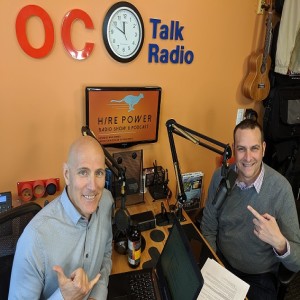
Thursday May 30, 2019
Thursday May 30, 2019
Attention comparison shoppers... waiting to see a “few more people” to compare before deciding to hire? Bad Idea, Time kills hires!
Riddling your interviews with randomly placed hurdles is just madness. Making the interview process challenging is essential but there is a correct order to the journey you create. Each step in your interviewing process must be intentional.
Today we are going to help you bring order to your interview process.
Today’s Quote:
"Comparison is a thug that robs your joy. But it's even more than that - Comparison makes you a thug who beats down somebody - or your soul."
- Ann Voskamp
Guest Bio:
With the resurgence of Big Data and AI, Shane Bernstein realized the tools needed to scale the effective outreach approach were finally available! His C-level customers were continuously frustrated with no viable and consistent solution, and unable to build the teams they needed in order to have the global impact each of their businesses required. So Shane founded Rolebot.
Utilizing the power of AI, he and his team have developed software enabling companies and staffing firms to reach their goals and measure ROI. As a result, Rolebot eliminates the way in which we traditionally pre-qualify talent, from days/weeks to seconds, and increases recruitment output and engagement results by 10x.
Show Highlights:
- What is making it impossible to hire Great people
- Over Interviewing- How much is too much
- Efficient Solution to come to a decision quickly
Problem:
Over interviewing is a direct result of Not having a solid hiring Structure
- Clarity of Intention
- Clarity of Values, Cultural & Skills Alignment
- Not Knowing how to ask the RIGHT Questions to gather clear evidence to support a decision
Where are the Obstacles?
Over interviewing makes it harder to get the hire.
- Timing (time kills placements)
- Too much time kills interest.
- Time allows time for competitors to steal… not an if, but a when
- Feedback channel
HR prescreens
- HR assesses for culture fit.
- The Team should screen for culture, not HR
- Take home assignments- Give BEFORE you get… mentality
- Pre-screen is a big waste of time.
What is Over Interviewing?
Reality vs. Perception
- Comparison Shopping
- Hurdles - Mindset Issue (You are not the only pretty girl in the bar)
- Demonstrates weak leadership
- Feedback channel. Is slow when the process is slow
****people hire on gut feeling…
Rick’s Input
- Why? Company does NOT have a strong interview structure
- Treat each person as though they are your Only option!
Solutions
The Set Up
- Recruiter - recruit & ask questions
- Is the recruiter/hiring manager bringing value?
- Manipulate time to gain accepted offers
- Someone needs to own the process
Interview Process
Two step process
Phone interview - lead, manager (not recruiter or HR)
- Credentials
- Technical skills assessment
- Skills-based conversation run by a team member
Onsite
- Get it done in 1 day… do not bring them back
- Has to be vesting on both sides.
- Have a hiring team & a process in play
- Put the decision makers and the people who will have to work closely with them
- Make sure the people can sell the position & the company
- Be able to sell: Why should I take this role?
Rick’s Input
- What’s in it for me???
- Phone Interview Establish -Why, Cultural Alignment, Impact
- Point person (CEO, Founder, Recruiter (not a farmer)
- Onsite
- Timed
- Structured (3-5 person Interview team)
- Challenging
- Knock Out Questions- aligned with Core Values
- A decision in 24 hours!
Key Takeaways:
- Assess the current process, does it align with the current marketplace, what ROI does each component bring, what is % of rejected offers, etc…
- Figure out what must stay, what can be omitted, or moved around and integrated
- The goal is to strike the right balance for your organization
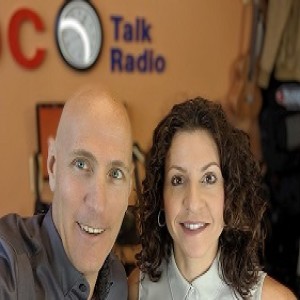
Thursday May 23, 2019
Marinela Gombosev: An Alternate Route for a Startup to Hire Salespeople
Thursday May 23, 2019
Thursday May 23, 2019
Alternative ways to hire salespeople when your company is getting started. Sales are the lifeblood of a company but what do you do when you need to grow revenue but have a limited budget? You get creative. Today we are talking about an interesting alternative to driving sales in the form of Independent sales reps.
Today’s Quote:
"Pretend that every single person you meet has a sign around his or her neck that says, 'Make me feel important.' Not only will you succeed in sales, you will succeed in life." - Mary Kay Ash
Guest Bio:
Marinela Gombosev is the President & COO of Evoke Neuroscience, a commercial-stage diagnostic company focusing on early detection of Alzheimer’s and other dementias with a vision of ultimately eradicating dementia. Marinela is a roll up the sleeves leader who strives to work across all levels of the organization, lead from a place of authenticity, and effectively represent the company to its clients, partners and investors.
Over 50,000 patients have been assessed using Evoke’s technology and under Marinela’s leadership, the company has twice been ranked in the Inc. 500|5000 fastest-growing private companies.
Show Highlights:
- The good bad & ugly of hiring independent sales reps
- How to hire them in the most efficient manner
Problem:
Why hire Independent sales reps?
Independent manufactures reps?
- Upside
- No money to spend, a great way to get growth
- Don't pay anything until they close a deal
- Fast
- Rephuner.net
- Downside
- Control or visibility
- Way to monitor, don't want to be managed
- Misunderstand the product, regulations, Get burned a lot
- Can put you in a legal liability
- Misrepresentation of contacts & skills
Solutions
How do you hire them?
- Dirty secret: You are buying their relationships
- Hiring because they are trained. Many are pretty bad. Where she has been successful are the ones with relationships. Once they sell their relationships.
- Similar types of products.
- Who are your call points? Personal network? Other reps that work with you?
- Place an ad and make sure profile is written for reps
- Who are you selling to, what are you selling, how much $ am I going to make
Schedule call
- Evaluate call points
- Level of interest
- Product Understanding
- Amount of time they can invest
- How many other clients they have
- Where am I on the priority scale
Hire
- Sign NDA
- Disclose comp plan
- Sales rep agreement
Comprehensive Training Plan
- On boarding program & test
- Access to all the training materials
Rules
- No exclusive territories
- Lead registration program / lead protection
- Demo product
- Short term play once the network is exhausted they usually burn out
- Internal expertise helps to close leads
- *One to Two phone call hire
- 3-4 hour time investment per person
- Product margins to support it
- A revolving door of recruiting. Have to constantly recruit
- Need 50 because most of them are not selling
- 80/20 rule
- *** Prepare for a love/hate relationship
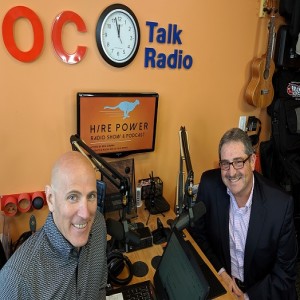
Thursday May 16, 2019
Angel Iscovich: Routine Hiring is Great for Business!
Thursday May 16, 2019
Thursday May 16, 2019
We are hard-wired to follow a routine. This is why we perform certain tasks better throughout various times of the day. So designing your hiring routine to follow a person's optimal performance is crucial making the right hiring decision.
Understanding and evolving your personal and company routines are vital for attracting talent!
Today’s Quote:
"Celebrate life in all its glory - challenge yourself to let the routine sing, and the new dance." - Maximillian Degenerez
Guest Bio:
Conventional wisdom suggests the best way to navigate our noisy new world is to accept change: Open up to novelty. Go with the flow. Embrace the relentless pelting of content minute by minute. Dr. I. is here to say this is not the best way to journey through our lives — and in fact, may go against our very nature.
Dr. Angel Iscovich is the President of Inflexion, LLC and the Author of his new book: Routineology: the Art and Science of Routine. Find out more on his web page www.angeliscovich.com and Routineology for Instagram and Doctor I on Twitter.
The crux of Dr. I’s book is that humans not only require structure, they thrive in it. From the womb to the tomb, we create and recreate numerous dynamic “Time Bubbles,” offering us meaning, fulfillment, and purpose. He is excited to show how implementing routine in one's life can lead to better, health, joy, and fulfillment.
Show highlights:
- The science of a routine
- Benefits and negatives of a routine
- Build a strong routine into your hiring practice
Problem:
What is a routine and why does this matter?
The science of a routine
- We are wired for regularity
- Change is not necessarily good for us.
- Routine is boring because you are doing the wrong things, wrong habits
Leadership
- Importance to develop regularity, routine & structure
- Routines become rituals and rituals drive the culture of the company
- Doing things regularly enhances performance
Solutions:
Personal Routine
- Make a routine of spending 45 minutes alone - reflecting
- Turn off the data, social media
- Especially if you are being creative or making a big decision
- Wired to regularity: being smart about what we do and when we do it
- Knowing your Circadian rhythm
- Technology is not able to replace Humanity, “Techmanity”, or how we are wired, is important in hiring talented people.
- Company rituals need to be re-engineered to meet the needs of the people
Interview & work productivity routine
- Task-related activity 8-10 am
- People Engagement 10-12pm (people are most social)
- Postprandial dip after lunch recovery time (task-related)
- Cortisol levels drop by 3 pm (Starbucks coffee, tea time) - Innovation time
- Least productive time - the body needs an energy boost
- Good time to meditate
- NOT a good time to interview!
- Great time for Innovation though... brainstorming
- Another hour of productivity 4-6pm
- Send people home at 3 pm and log on for another hour of work at 7 pm
- *Optimal interview time between 10-3
Rick’s Input
- Hiring routine with the purpose of being impressive
- Interview people when they are most
Key Takeaways:
- We are wired for Regularity and our unique Routines in themselves give us meaning and purpose.
- Our Circadian Rhythm provides us with when we are at our best and when we can be most productive.
- We need leaders to make for stable environments for our team members that create Routines, Rituals, and our Company Culture.

Thursday May 09, 2019
Lee Caraher: Boomerang Hires Knock Out All Others!
Thursday May 09, 2019
Thursday May 09, 2019
Is it a good or bad idea to hire former employees back? In today's job market, people may exit a company to experience life at a startup, change industry, or even go back to school. So why would you have a no-return policy?
Jack Dorsey left Twitter to found Square between his two stints as CEO of Twitter. And Steve Jobs was a boomerang hire. We need to start treating departing employees as future brand ambassadors, potential customers, hiring references, and even boomerang — returning employees.
Today’s Quote:
"There is nothing like returning to a place that remains unchanged to find the ways in which you yourself have altered."
- Nelson Mandela
Guest Bio:
Lee McEnany Caraher is the founder and CEO of Double Forte PR & Digital Marketing, a 15-year-old national agency that works with beloved and up- and-coming consumer,technology, and wine brands. An acclaimed communication strategist, Lee is known for her practical solutions to big problems. Lee has a reputation for building cohesive, high- producing teams who get a lot done well and have fun at the same time. She is a straight talker who doesn't hold too many punches, although she does her best to be pleasant about it. Her big laugh and sense of humor have gotten her out of a lot of trouble.
The author of Millennials & Management: The Essential Guide to Making it Work at Work, Lee based the book on her experience with epically failing and then succeeding at retaining Millennials in her business. Her second book, The Boomerang Principle:Inspiring Lifetime Loyalty From Employees, published in 2017, is a pragmatic and actionable guide to creating high-performing work cultures ready for the future (available on Amazon).
Lee is a popular guest expert on leadership, intergenerational workplaces, public relations, crisis communications, social media and integrated marketing. She splits her time between San Francisco and New York City, and puts her medieval history degree to work every day.
Show Highlights:
- What a boomerang hire is
- Why you should absolutely integrate this practice into your talent acquisition process
- How to acquire boomerang hires
Problem:
Why would you hire someone again?
- If they come back to you it means they liked it there
- Not going to hire them for the same job
- They will be even more valuable to your company the second time bring something of value to your company
- Take less time for them to come up to speed 2-4 months (up to 12 months for new hires)
- Boomerangs are the highest performing hires at google
- More than 45% of millennials say they would absolutely return to a former employer
What would make someone eligible for rehire?
- Anyone who leaves in good standing
- Building loyalty beyond employment
Rick’s Input
- Already familiar with the culture
- Boomerang trend pioneered by millennials
- Rehires are less risky-
- would not choose over someone outstanding (rockstar)
- The decision should be made based on the exit interview
Solutions:
Mindset:
Understanding why people left
- Take a long view
When they leave
- Be happy for them
- Never counter
- Ask “how can I help you?”
Steps to create a re-hire program:
Create a program or environment - keep in touch with the people who left on their own volition
- Set up an Alumni program (company run) facebook group (not a Linkedin group)
- Content engagement
Keep the universe up to speed with what you are doing….media relations
- Birthday card
- Share wins
Interaction… stay close to the universe of potential
Hiring- share new roles with the alumni group letting them know that hey can came back.
How is Onboarding different?
Rick’s Input:
- Why did people leave in the first place
- One survey found 70% of employees say job related training and development opportunities — or lack thereof — impacted their decision to stay at their job.
- Growth & training
- Leadership does not have their back
- Trust - transparency, communication, investment (not perks)
- Consider re-hiring people who left due to a poor leader (toxic executive)
Key Takeaways
- If we aren’t open to hiring former employees you are SHRINKING your potential talent pool of great employees
- Everyone who leaves you can hurt you or help you. Do everything you can to let them help you! Help you find new employees, help you spread the word, help you find good partners.
- Take the long view – your business will be BETTER all the way around if your employees are loyal to you – NOT because you pay them but because they WANT to. And then every time someone leaves the company you are actually GROWING your footprint not shrinking it.
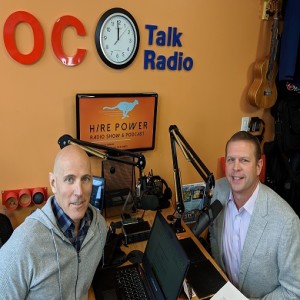
Wednesday May 01, 2019
Mitch Balzer: Comparison Shopping has No Place in Your Hiring Process!
Wednesday May 01, 2019
Wednesday May 01, 2019
Not making a decision quickly is one of the biggest mistakes a hiring manager makes. Often the fear of making the wrong hiring decision leaves people in limbo and ultimately turns them off from working at your company.…....Wanting to see a “comparison candidate” is a clear indicator of a broken interview process!
Today’s Quote:
"Passion provides purpose, but data drives decisions." - Andy Dunn - CEO of Bonobos
Guest Bio:
Mitch Balzer is the Co-Founder & Executive Vice President of Agema Technology Inc, an Orange County based Professional Services focusing on enterprise business systems like Oracle and SAP, Virtualization, and IT Security. Since starting Agema in 2012 he has overseen many of the Fortune 500 clients in the Information Technology, Government, Insurance, Finance, Utilities and Oil & Gas industries ultimately delivering a 77th ranking on the Inc. 500. Prior to Agema, Mitch started his career with a national, publicly-traded technical services firm rising quickly through the ranks. In 2002 he helped start another staffing company driving revenue and delivering a top 100 Inc. 500 ranking before departing to cofound Agema. Mitch Balzer and Agema also hold a Secret Clearance.
Show Highlights:
- The Comparison Syndrome
- Why this is detrimental to your business
- How to structure your process to avoid this costly mistake
Problem:
Why is this important? FEAR
- Fear of a bad hire for a mid-level manager.
- Want to see another resume, comparison candidate
- **Making a decision on the hire - biggest mistake a hiring manager makes!
- Setting expectations- pre-commitment, you trial close a candidate (at least you should be) when you have them interview by asking will you take this job if offered? You need to do the same with the hiring managers, if a great candidate that fits X, Y, and Z comes in tomorrow can you offer them the job right away?
- Ham & Egg - one good resume with one the recruiter knows isn’t a great fit
- Resources
Why this is Bad for your business?
- Ramifications of waiting – time kills all hires
- Outcome - sent lesser people
- Prioritization of the roles – your openings will be a much lower priority whether its an external or internal recruiter
Rick’s Input
- Stalling the process kills Momentum, Interest & Engagement
- Result of poor planning
- Defining “WHO” is needed
- The reason you are unsure is due to the poor interview techniques/process
- Gathering the right EVIDENCE in the interview
Solutions:
How to Structure for a decision
- Who has the ultimate authority to make the decision?
- Disconnect in communication and should be involved in the process
- Clearly defined process. Get commitment to timelines on resume review, interview scheduling/process, and feedback and final decisions on a candidate.
- Feedback channel (ghosting)
- Pulling the trigger! Close, Close, Close
Everyone wants to go to heaven but nobody wants to die -Tom Delaney… you all want the best candidate but you can’t be afraid of making a decision.
- If you are not sure… try contract to hire or hourly w2 consultants
- Don’t treat people like everyone else. Keep it tailored to the individual
- As a recruiter or service provider ask your clients what turns you off and then make sure you don’t’ do that?
- Also, make sure you know how you can provide the most value to them.
Rick’s Input
- Mindset:
- Approach each person with Intention to Hire
- Only Choice
- Easier to say Yes than No
- Plan & Know what you need
- Structure the interview to surface:
- Cultural / Values alignment
- Evidence of transferable accomplishments/impact
- Skills
- Behavioral interview structure to make a data-driven decision
- Communicate: pace, timing & what happens next
- Unsure?... follow up call to address the issue (next day)
Key Takeaways
- The harsh reality is that all sales/hiring processes have a cadence. If you have properly qualified your target, and then stay within that cadence, there is a reasonable chance you’ll get to “yes.” But if not, you are almost certainly going to, eventually, get to “no.”
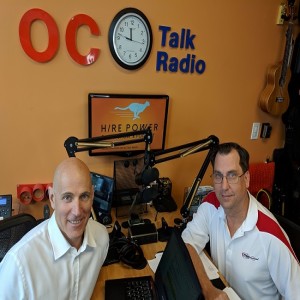
Thursday Apr 18, 2019
David Ferguson: Do Personality Assessments Create Lazy Interviews?
Thursday Apr 18, 2019
Thursday Apr 18, 2019
Do personality assessment tests really work? We are going to discuss the why, when & how to give assessment tests. Personally, I am not a big fan because they do nothing to develop the human connection which is so important in today’s hiring landscape.
Today’s Quote:
"Body language and tone of voice - not words - are our most powerful assessment tools." - Christopher Voss
Guest Bio:
Founder and original software developer, David Ferguson, was born into a manufacturing family by virtue of his father, the owner/operator of a fabrication job shop that still operates today. Now, with over 25 years of experience working in and writing software for the fabrication industry, David is considered an expert in the job shop arena. A sought-after speaker, he has consulted with numerous manufacturing companies around the globe, guiding them to become more efficient and cost-effective.
In the early 80’s, David created and sold his first computer program, Arrow Data Systems, a CAD/CAM system for the Apple IIe computer. During this time, he observed his father coming home late each night, only to begin the estimating process for his shop. David saw an opportunity to automate the estimating process using technology. As a result, the “Quote It” estimating package was born, becoming one of the leading sheet metal estimating packages in the world. Shortly thereafter, wanting to expand its capabilities, David developed the FabriTRAK Production Control Package. Over the years, it had been licensed to both METALSOFT and Amada America.
By the end of 2007, David had regained control of all FabriTRAK licensing agreements, completely re-wrote its production control offering, creating MIE Trak Pro. MIE Trak Pro is a state-of-the-art ERP system ideally suited to manufacturing businesses. It was designed to accommodate most production cycles and optimize the capabilities of repetitive, custom, quick-turn, and mixed mode operations. To launch his newly optimized program, he partnered with Don Clutter and founded MIE Solutions.
Since its inception, MIE Solutions has grown over 500 percent. In addition to North American sales and support locations, MIE Solutions operates offices in Australia, Mexico, New Zealand, South Africa, and the United Kingdom.
Show Highlights:
- Are personality assessments worth the time?
- What are the true results you can expect
Problem
- Personality Assessment Tests - Why should they be given
- Measuring against what you are looking for in a person.
- personality, Based on traits they think will be successful.
- Screening tool
- Do they damage the personal connection?
- Cultivate the transactional relationship?
- Create a lazy interview process?
- What if you are wrong about the traits?
- Judge against the company values?
Rick’s Input
- Assessments are not an identification tool
- The best tool is still a conversation
- Assessments are Transactional
- If used too early in the process, kills the human connection
- Personality traits do not ensure a successful hire
- Great to tell you how to manage after they have been hired!
Solutions
- Order in which tests should be given & Why?
- When should tests be given
- For skills, onsite after talking to a live human and engaged
- For personality, at the end.
- How should they be given
PXT test - cultural fit
Provides more confidence in the hire.
- Felt confident in a hire even though the personal side was not as clear
- Additive to what they feel they can do
- Flags people who give contradictory answers
Willingness to take the extra step has really amplified the level of quality and the people they hired
Results for David’s company
- Lower attrition
- Better employee treatment based on their understanding of the individuals
- Management tools for the tenure of the employee
- The exam is essentially the behavioral test?
Rick’s Input
- To Judge against a cultural fit, you must know your corporate values first!
- HUGE mistake - when company’s use it too early in the interview process.
- Must have a person emotionally engaged first
Key Takeaways:
- The assessment is just another tool in your arsenal
- If you are not comfortable with it, don't hire the person (rash decision)
- Don’t be rushed. Hiring is not an emergency
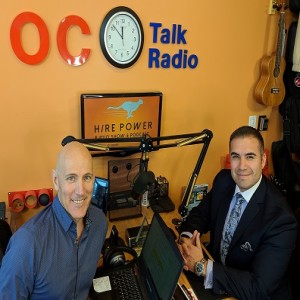
Friday Apr 12, 2019
Anthony Camacho- Sniffing Out Excellence When Hiring Salespeople
Friday Apr 12, 2019
Friday Apr 12, 2019
The average annual turnover in sales is 25 to 30%. That is the equivalent of hiring & training the entire Sales organization every 4 years! How do you know you are hiring a good salesperson? Why you look for evidence of success that is transferable to your organization. Today we are going to really help you sniff out the correct information to hire the right talent.
Today’s Quote:
"There are worse things in life than death. Have you ever spent an evening with an insurance salesman?"- Woody Allen
Guest Background:
Anthony Camacho is the Founder & CEO of Top Producer Factory. Having worked with start-ups to $40 million ‘small businesses’, Anthony is a sales and performance mentor to everyday entrepreneurs as well as Fortune 500 companies. He has personally cold called millions of dollars in sales, using techniques and strategies which he freely shares from the stage. A former Dale Carnegie Coach and certified sales coach through the Institute for Professional Excellence in Coaching, Anthony, 37, has 20 years of experience in cold calling, generating new prospects, bringing in new business, closing deals and managing sales teams.
Working with corporate clients, executives and small business rockstars; Anthony is currently on tour in the United States and Australia, delivering sales and leadership seminars and keynote talks.
Based in Southern California, Anthony – a father of four girls – is also a yogi, pursuing the lifestyle of Bikram Yoga in his downtime.
Anthony is the Author of 3 x best-selling books (Buy them on Amazon.com ») Anthony Camacho® has presented at more than 500 live events including TedEx style talks, workshops, seminars, Expos & industry-specific conferences. He has been a speaker/emcee for:
- Habitude Warrior Conference (Erik Swanson)
- Evolution Seminars (Matt Brauning)
- Free to Bounce (Paul Cummings Worldwide Enterprises)
- Guest lecturer (University of California, Riverside)
- Miss West Coast Beauty Pageant
- Corporate America including Fiesta Insurance Corp and Excellence Real Estate Empire
- REEMA Beauty Charity Events
- Various Chamber of Commerce
Show highlights:
- How to identify great salespeople
- How to sniff out the frauds
- What to do in the interview process
Problem:
How do we identify great salespeople
Both parties need to be prepared. The interviewee should be asking about growth, opportunity, and professional development. Rate people on the quality of questions they ask.
How they interview? No structured interview process. Sometimes they just want a body… mentality about hiring the right person… run on Turn & Burn. Companies don't consider how much how much they really lose by making the right hire. Ultimately, hurts the company morale and customer base. Referral hires - no shortcuts.
Managers take a Narrow view or let complacency set in
- Unrealistic High bar…. Looking for “rock stars”
- Status quo is a business killer
***Sales management -The reason bad sales hires are made, bad leaders hiring bad people. The biggest challenge is Mid-level Management. Mid managers are delegated.
*** Making people managers without training. How do I duplicate myself?
- Letting middle managers learn & grow… giving someone a shot. (hope strategy)
- Clarity on job description/expectations or even a clear compensation plan (not defined or clear)
- How they get paid…. They lose their enthusiasm
Is the C- level is setting people up for failure?
Rick’s Two Cents:
- Be wary of Stars!
- Research indicates an A player at one company doesn't necessarily transfer to another
- Train your leadership before they start hiring. I failed miserably when I was promoted to manager
- Test answers
Solutions:
What to do in the Interview process
- First prepare people & be prepared
- What to bring, and prepared questions to have for us
- Show the person that you are serious.
- Private office, punctual (preferred early),
- Observe how they present themselves, time frame.
Note: Starbucks & Denny’s are for MLM pitches.
What to look for: Anthony’s Ingredients of a good salesperson
- Integrity- trust with the customer
- Above and beyond in serving the customer
- prior job experience/history
- Loves door to door salespeople- most grueling job ever
- Manual labor- if they know how to sweat, making a phone call is easy
- Life goals, financial goals/aspirations = hungry for themselves
- Closing ratio/formula to make a sale. Day to day sales activities break down (know their numbers, how do you get to that?
Hiring Management:
- Promoting managers- good salespeople need to be trained to be a leader.
- Training received before becoming a manager. Time to learn before accepting the responsibility- learn how to delegate, motivate, lead
- Get a curriculum for leadership
- Companies managers/ not leaders
Rick’s Insight
- Focus on behaviors- Look for evidence
- Understand how customer relationships are developed
- Hire for core Values Alignment
- Cultural fit
- Look for transferable skills to provide growth opportunity
- Locating transferable skills requires creativity
- Training
Key Takeaways:
- Benchmarks •Know your closing ratio and understand the closing ratio for your team
- Desire •Does your sales professional and the team have a “BIG WHY” You can teach everything but you can’t teach desire
- Buy-in •Sell the objective to your sales team
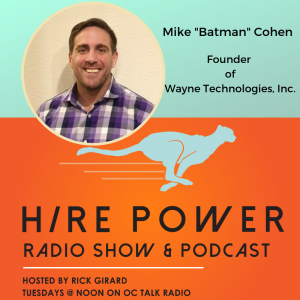
Friday Apr 05, 2019
Friday Apr 05, 2019
Diversity & Inclusion is critical to your company’s success but it is not a strategy. Here’s why... D&I needs to be built into the DNA of your company instead of being treated with kid gloves. Besides, hiring like-minded people is bad for business!
Today’s Quote:
"Our diversity is our strength. What a dull and pointless life it would be if everyone was the same." - Angelina Jolie
About the Guest:
Mike “Batman” Cohen is the Founder of Wayne Technologies, a recruitment training and search firm. Mike has over a decade of experience placing technologists, recruiters, and business development professionals, and has conducted training for Corporate and Agency Recruiters.
Throughout his career he’s learned several things that he’s committed to paying forward:
- We can’t make it on our own - we need community
- There is no “secret sauce” - we should be sharing our skills, tips, tricks, etc. openly
- Data is extremely important
- Being a good human is more important than data
He has worked with a diverse group of clients ranging from GIPHY, Spotify, TripAdvisor, Digital Asset, MacDonald Miller, etc.
He contributes articles to SourceCon, has a chair in the Program Committee with ATAP, helps run SourceHouston, and is a Brand Ambassador for ERE.
Mike has spoken at:
- Talent42 (June 2019)
- TechRecruit Los Angeles (July 2019)
- TechRecruit Chicago (September 2019)
- HireConf (October 2019)
- HRTX Dallas
- RecruitCon
- ATAP Webinars
- TalentNet
- SourceHouston
- ERE
- HR Houston
- Scala Up North
- Scala.io
Show Highlights:
- Why Diversity & Inclusion is not a strategy
- How to embed diversity into your Company's DNA while staying true to your company values
Problem:
Why is Diversity & Inclusion such a hot topic?
-
- Diverse communities are growing and matriculating faster than any other
- Organizations are realizing that diverse thought doesn’t just come from people who went to different schools or studied different subjects, it comes from background, upbringing, etc.
- We all want females, minorities & orientations.
- Candidates are placing a large focus on organizations that put a value on D&I - if you want the best candidates - this is one of the things that’s important to them!
Why is this important to organizations?
- Are we hiring because of D&I to check off boxes?
- Shouldn’t we be looking deeper into diversity of thought rather than physical characteristics?
- Hiring people who are different from you and are included in your culture
Shouldn't we just be concerned with hiring the best person?
- Just start hiring people who make you uncomfortable
- Embrace the differences
- Hiring like minded people is bad for business
What about the alignment of core corporate values?
- Define corporate culture.
Solutions:
If Diversity & Inclusion isn’t a strategy, how do we accomplish it?
- You don't want to hire someone just because they are a certain classification
- It has to go beyond “skin deep” - this isn’t about the way someone looks, it’s about integrating all different walks of life or trains of thought or images into your brand.
- Not to diversify to make things different, but to create a culture where diversity is the norm - that is how you create inclusion
- The desire to have different people is not a business strategy
- It is a top-down mind-set as to how the business operates and what it considers important, successful, and a good fit
- Vetting issue- how does one determine who the best person is. Not the values or mission
- Grey area- Defining the gray area or you will fail.
- Focus for cultural alignment vs skills
- Perks that attract like-minded people, like Ping pong and foosball tables & kegerators, reduce D&I.
- The Strategies to achieving D&I are merely the execution of a goal.
- Companies aren’t built on strategies - they are built on vision and mission - Strategy is simply how we get there - is your company built on top of a foundation (mission and vision) that doesn’t celebrate diversity, but instead values it as a competitive advantage?
- These values and mission themselves should come with a very diverse perspective.
- The more avenues of thought the quicker and higher quality it will take you to that mission.
Rick’s two cents:
What should be your strategy?
- Hire People who perform
- Hire People who bring different perspectives
- Hire People who will challenge you
Key Takeaways:
- D&I isn’t a strategy, it’s a business mindset
- Dissonance is a good thing! Just be respectful
- Diversity is a mindset, Inclusion is turning that mindset into the norm
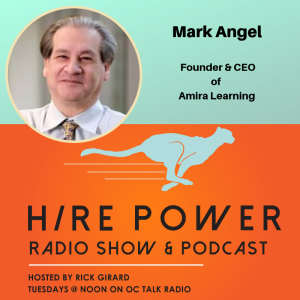
Thursday Mar 28, 2019
Mark Angel: How to Hire, Build Process & Lead in a Distributed Startup
Thursday Mar 28, 2019
Thursday Mar 28, 2019
What are the biggest challenges in building a distributed team as a startup? Today we discuss how to Hire, build process and lead in a distributed model. We will learn that uncovering the right people hinges on the Individual's desire and their emotional intelligence.
Today’s Quote:
“Completing one another is more important than competing with one another." - John C. Maxwell
Show Guest:
Mark Angel is the CEO and Co-founder of Amira Learning, the company reinventing learning to read with AI. Amira is a rapidly growing, venture-funded startup bringing the first intelligent reading assistant into K-3 classrooms.
Mark formerly served as Chief Technology Officer at Renaissance Learning, where he led the R&D organization and worked on the two most successful reading apps in the United States – Accelerated Reader and STAR. He has worked for 30 years in the Silicon Valley as a CEO, CTO and General Manager for innovators in the realm of Artificial Intelligence and Natural Language Processing (Ernst & Young, Nuance, KANA Software).
Mr. Angel is the founder of three successful start-ups. He is a chief inventor on more than 10 patents in the areas of search.
Episode Highlights:
- The Story of the Challenges faced when building a distributed company
- 3 biggest issues you struggled with
- Tools & solutions that worked best for your team
Problem:
Challenges in Hiring a Distributed Team:
- Hire for the distributed model
- Learn to screen for people who are truly able to function in a distributed environment
- People not really self-aware.
- Build process around the distributed model;
- Challenge: creating infrastructure and culture of behavior to help people to collaborate
- Choices in tooling that turned out to be wrong
- Have to "servant-lead" for the distributed model.
What issues have we struggled with around hiring?
- Where they will Thrive!
- People are not self-aware around work mode…
- The focus seems to be around the technologies they want to use or the comp they want.
Discuss the Model
- Need to put the issue up front before people get excited about the rest of the story and fool themselves and consequently us
Core Values alignment
- We need to be conscious that some folks like talking/collaborating and for others, it’s not the most pleasant part of the day. We aren't going to change a leopard’s spots.
Creating a situation where there is a balance of work and not having too many meetings. Keeping people in a place where they are getting constructive work behavior. Getting that work done but also helping others to get the work done. People are happiest when you find the “groove”.
Rick’s Challenges
- An issue of Upfront Expectations alignment
- Continually ask “Why”
Solutions
What have we done about this?
- Put this issue front & center in the interviewing process
- Getting out of the skills-based mindset.
- Screening - needed to find people who are able to cope with the nature of the model.
- Intentional about the need for people who are wired to work in a distributed environment.
- -talk about the distributed issue up front.
- Hired a recruiting expert
- Learned to screen for being at least somewhat "outgoing" and "opinionated"
- "Servant-leadership" for the distributed model.
How do we manage work?
Baking collaboration into everyday environment. Tools like google suite/slack/zoom/github/atlassian -- basically emphasis is on creating the norms around the tools. Understand when they should be using the tools
- Slack, Zoom, Gmail suite, Google docs works really well, hangouts did not for them.
- tools around design thinking.
- Set of heuristics and norms around the tools.
Allow people Flexibility
What went right & wrong in the process?
- right -- took a "team experiment" approach
- right -- recognized they needed help & hired an expert
- wrong -- didn’t push hard enough to create norms
Rick’s first step
- Take the time to understand a person’s desires before you “Pitch” the company
- People will tell you what they want. You just have to ask.
- "If you could design your ideal company, what would that look like for you?"
- A company where you will Thrive!
Key Takeaways:
- Hire people who are self-aware - Hire for EQ & cultural fit first
- Experiment with popular tools to find the tools that “best fit" for your team
- Recognize you are fighting human nature and hire to overcome
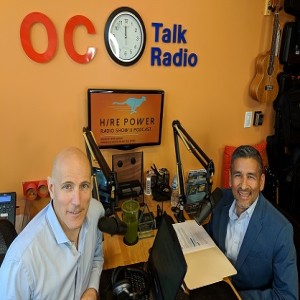
Thursday Mar 21, 2019
Ernie Basulto: Non-Verbal Clues to Discover the Truth in the Interview
Thursday Mar 21, 2019
Thursday Mar 21, 2019
Non-verbal communication and digging for clues to get to the root of who people really are. 93% of our communication is delivered non-verbally. Extracting the correct information starts with your openness and then observing how things unfold.
Today we are going to hone your ability to read people better in an interview!
Today’s Quote
"You don't have to tell me what your limits are when the decisions you make, your actions and body language says it all."
Show Guest
Ernie Basulto developed an early interest in cultural and human relations as he grew up in two separate countries. He was inspired by his father to develop the ongoing needs of the Hispanic workforce, and has done so by providing support and guidance to both business leaders and employees throughout his 26-year tenure in Human Resources. Ernie holds a Bachelor of Arts in Business Management from the University of Phoenix.
Recently, Ernie was a Senior Human Resources Business Partner at the 5th largest retail mortgage lender in the nation, and is currently the Director of Human Resources at Antis Roofing & Waterproofing. At Antis he provides leadership in all aspects of HR including hiring practices, establishes company culture, and guides employees to find their Purpose at work.
Episode Highlights
- How to build rapport
- Reading verbal and nonverbal cues (body language)
Problem
Focus on “Skills” clouds our vision so we misread people. Why is this such a problem? First, we need to get people comfortable in a manner that is congruent with your environment
- Open interaction
- Ask a Basic question: walk me through your resume to gather a baseline.
- Settle the nerves, get comfortable
- Observe & Mirror to build rapport
- Listening to them
- Experience questions where they tell him stories to evaluate thought process, how the person treats others, react under stress. You can tell a lot about a person by the way they tell a story
- Depends on the type of role they are hiring for.. Look for little signs, hints
- Example: story- stories focused on complaining about their company throughout the story. Pivot into what did you do to fix the problem. Tone of arrogance. He released him from the process and gave him the feedback.
Solutions
How do we structure the interview and what should we be looking for?
- Opening question to behavioral
- Company values, requirements of the position, Fit with the team (cultural fit)
- Hiring Manager > on occasion they meet with the team.
- So important at all levels, especially where you are exposed.
- Raising the bar on performance
Reading Body language
- What to look for?
- Depends on your culture/environment
- Positive body language
- Body Language flags
Rick's Points
- Be Aware of your own body language! Open & Positive
- Past nervousness, fear & discomfort
- Important to make people comfortable first
- Get past
- Mirroring- Unconscious sometimes
- person trying too hard to build rapport
- Shoulder movements communicate emotions
- Positioning & movement
- Uncertain or lying -slow rise - lack confidence
- Extreme behaviors- pay attention
Key Takeaways
- Observe & Mirror
- Get past the nerves
- Shoulder movement tells all!
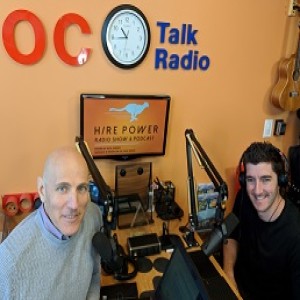
Thursday Mar 14, 2019
Erik Huberman: Dissecting a Hire Gone Wrong
Thursday Mar 14, 2019
Thursday Mar 14, 2019
The mistakes we, as entrepreneurs and hiring managers, make when building our companies. Often our need to fill overrides our logic in determining the fit between both parties and as result Core Values are often ignored. Assumptions, unclear expectations, and lack of diligence make for a perfect storm of a disastrous hire.
Today’s Quote
"Hiring people is like making friends. Pick good ones, and they'll enrich your life. Make bad choices, and they'll bring you down." - Jason Fried
Show Guest
Erik Huberman is the founder and CEO of Hawke Media, the fastest growing marketing agency in the United States. Launched in 2014, Hawke Media has serviced over 1000 brands of all sizes, ranging from startups like Tamara Mellon, SiO Beauty and Bottlekeeper to household names like Red Bull, Verizon Wireless and Alibaba. Hawke Media has taken home numerous industry awards including inclusion on the Inc. 5000 2017 list of “Fastest Growing Companies”, Fortune Magazine’s “50 Best Workplaces in Southern California” and Forbes’ “Content Marketing Companies to Check Out in 2018."
"Prior to Hawke, Erik founded, grew and sold two successful e-commerce companies. Huberman is the recipient of numerous awards including Forbes “30 Under 30,” Inc. Magazine’s “Top 25 Marketing Influencers,” and Best in Biz North America’s “Marketing Executive of the Year.” A regular contributor to major publications like Forbes, Entrepreneur and CS Q. Huberman is also a well-known keynote speaker.
Episode Highlights
- Break down one of your early hires and talk about the decisions that were made and why
- What we learned and how you can avoid making our mistakes
Making a wrong Hire: Walk through the story
- Hired an executive, all-star, great background
- “Why would you buy a dog if you're the one barking on the corner”
- Discussing expectations, but not the HOW.
- Had a budget, revenue numbers, really clear…
- Takes time for executives to ramp up
- Hired from a large company- a different mindset
- Taking people through a more formalized process.
- Properly frames the mindset as a professional environment
- You are taken more seriously
- *Onboarding Process
- Didn’t have a process. Throw people to the wind
- Unprofessional entrance + people didn't view it professionally
- Made the mistake of selling perks
- Hired 7 people in the beginning, only one stayed past 6 months.
- Bridging the gap with the business.
* Post hire, you are not done once you made the hire. Once someone is hired, real-time investment into their success.
Rick’s Hiring Mistake
- Hiring Friends without clear expectations
- created an expectations document
Key Takeaways
- Stick to a hiring process - It must be Professional
- The more senior the hire, the more time investment to align expectations - May take up to a year to come up to speed

Thursday Mar 07, 2019
Tevis Trower: Re-Humanizing the Interview Process By Shifting Our Language
Thursday Mar 07, 2019
Thursday Mar 07, 2019
We don't hire for human competency but for skill set. Our language is inhuman in spite of the very real experience of working with HUMANS. People want Connection and Authentic Interaction. We need to understand What makes you, you?
Today’s Quote:
“Learn everything humanly possible about everyone you do business with." -Harvey Mackay (Swim with the Sharks)
Show Guest:
CEO of Balance Integration Corporation | Advocate for Corporate Culture & Employee Engagement
Tevis Trower is a pioneer in optimizing corporate cultures. Heralded in bestselling Megatrends 2010 as “corporate mindfulness guru for the new millennium”, Tevis has assisted powerful organizations ranging from Disney to Morgan Stanley in optimizing their most precious assets: human beings. She has created and facilitated global executive immersions for prestigious organizations including Harvard Business Review Events, Young Presidents Organization, PWC, Bloomberg LP, Viacom, Google and The Economist on issues including mindfulness, executive lifestyle, personal mastery, innovation, and the role of consciousness in creating radical success.
You can find profiles and expert advice from Tevis featured in respected media outlets including Forbes, Fortune, BusinessWeek, Glamour, YogaJournal, CIO, Pink, RealSimple, Crain’s, New York Post, Financial Times, WWD, New York Observer, MSNBC, FoxBusiness, NY1 and Martha Stewart. As NYU Faculty teaching Business Creativity & Personal Mastery, Tevis has also served as worklife expert to WebMD and Huffington Post. Tevis lives what she teaches spending time in NYC, Montauk and Woodstock, enjoying surfing, snowboarding and entertaining friends at home with her dachshund, Ruby.
Episode highlights:
- Why it is important to re-humanize your hiring process
- Changing the mindset by shifting the language
- The formula for a successful shift
Problem:
Why is this important?
- Because we focus upon skill development to get into the roles we aspire to, we buy into the notion that work and life are separate. But the reality is that we are only one person, one being.
- Through this buy-in to self-abnegation, we leave ourselves out of the workplace and all but guarantee to burn out and disillusionment. When we approach interviewing that way, we’re bound to forget that the person across from us is first and foremost a human being.
- Impostor syndrome of the interviewers (hiring managers!)
- IS-is there a place for me here? Everyone feels a little like a fake/fraud.
- Myth: This person is only as good as their resume.
- Truth: Most of the best people, have the worst resumes
Mindset
- Creating a corporate culture happens one conversation at a time. Talking about what you are passionate about, what matters to you.
- Work is home
- It is a demand market.
- * we forget we are hiring a human being… not filling a seat.
- Bring an entire life into the company
Rick’s Thoughts
- Stay away from “stinkin thinkin” - Transactional thought
- Judging people based on a piece of paper
- Restructuring the recruiting department to touch those who apply
Solutions:
By shifting the language we begin to shift the mindset.
Changing the language - humanize
- What does it mean to be human at your company?
- Don’t talk headcount, filling a seat
- life count, heart count.
- Talk about finding the “right new colleague”
- Not filling a seat or role, rounding out our community
- Shift to human terms
The breadth and depth of this person.
- Talk about the eulogy and not the resume
- Think of everyone in terms of a peer
- Values -
- The framework is in the questions, not the answers
If the adage is that people leave managers, not companies, they probably refuse offers from managers as well. Foster a culture that supports the value for success. Are they Google-ly? And what happens when being googly becomes a weakness? Homogeneity can be a downfall.
Rick's Plan
Cut out words like “candidate”, Job Description, industry terms
Key Take Away:
- Tune into your own Humanity
- Humanize the language
- Slow down the interview process to give more room & space
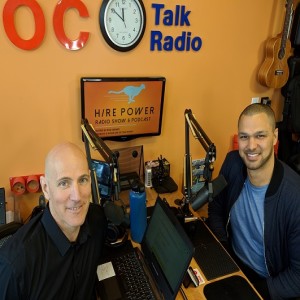
Thursday Feb 28, 2019
Thursday Feb 28, 2019
Before you hire, you need a clear understanding of what you need and Why. What is required needs to be focused on the work that needs to be accomplished. And that’s Why it helps to prioritize the level of importance.
The most crucial part of the recruiting process is understanding why this is really needed. It is often overlooked.
Today’s Quote:
"There are no secrets to success. It is the result of preparation, hard work, and learning from failure." -Colin Powell
Show Guest:
Greg Toroosian has spent the best part of a decade recruiting for technical positions across software, IT, and hardware verticals. He also has experience building non-technical teams including finance, marketing, business strategy, legal and operations. His career started in the UK as an agency recruiter working with companies in various industries and at different growth stages. He’s currently the Director of Talent Acquisition at sweetgreen where he oversees the team that manages all corporate hiring for technical and non-technical teams. sweetgreen is set to grow rapidly this year due to their focus on technology and the recent large round of investment they received.
Episode highlights:
- Defining what is needed and why
- Our Methods for defining and prioritizing your roles
Problem:
- Hiring managers don’t really know what they need
- Understand the gap, skillsets, and planning for growth
- I need another one of this person
- Job description we used last time
- Factoring in lead time to make the hire and then bring someone up to speed.
- Realistic Timelines
- Inefficient time spent on the wrong people because the hiring manager is really not
- Sitting down and outlining the work that needs to get done
- Prioritizing the work
- Setting performance benchmarks
Solutions:
Focus on the What and then the Why
- Greg’s Intake Process to define the What & Why - Request Greg's Intake Form: andrea@stridesearch.com
- Prioritization: is this really needed?
- What will the person be doing?
- How will that add value here?
- How is the work being done right now? (light bulb of urgency)
- Forward-thinking- hiring ahead of the plan
- Hire toward the body of work
Rick's Input:
- Write down the actual work that needs to be done with a timeline
- Define the expectations by setting at least 3 Performance metrics for the first 90 days
- The Problems that need to be solved help to gain emotional buy-in
- Tie the work to Growth - Impact
Key Take Aways:
- People are attracted to the problems you solve
- For hiring managers: Upfront time spent configuring the process and fleshing out then real need is crucial to a successful, smooth and efficient process. Give your recruiting partner adequate time, think through the real need and purpose of the role, and be clear on what the success criteria is.
- For recruiters: Know that this is where you can add a lot of value as a partner. Be confident in the questions you ask, be inquisitive, think about what you need to align on and focus on unearthing that information. This document and the information it contains will be what you refer back to throughout the process to make sure you’re on the right path and to push back when necessary.
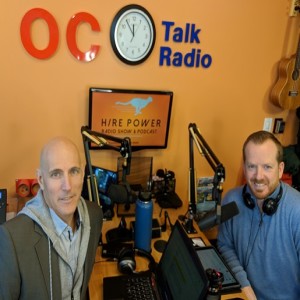
Thursday Feb 21, 2019
Thursday Feb 21, 2019
Employer branding is a very hot topic! Today we are here to challenge conventional wisdom and say that people pitch their company and themselves wrong.
They pitch what the company does and the perks they offer rather than the problems they are solving first. Talented people want to solve challenging problems!
Now I am a huge believer in looking at what everyone else is doing and doing the opposite… it works for me!
Today’s Quote
"A problem is a chance for you to do your best." - Duke Ellington
Show Guest
As a global Keynote Speaker and Managing Partner of InfluenceTree, Ryan Foland helps executives harness the power of vulnerability and authenticity to build better, more relatable, more profitable brands. Recognized by Inc. Magazine as a Top Marketer and named a Top Personal Branding Expert by Entrepreneur Magazine, Ryan is the inventor of 3-1-3® Method, a discovery process that helps communicate ideas into three sentences, which is condensed into one sentence and then ultimately boiled down to three words. His book Ditch The Act: Unleash the Surprising Power of the Real You for Greater Success, will be published in October 2019 by McGraw-Hill. When he is not speaking, he is likely sailing.
Episode highlights
- Why the positioning of your messaging does not attract people to your company
- Share our methods for engaging talent to be drawn to your company
Problem
- No one cares what you do or who you are.
- Try instead promote the core problem you solve.
- Lack of Aspirational influence.
- People not Inspired by the impact your company will have on the world
Psychology
- The mindset of the person you are talking to when presenting your opportunity
- Reptilian brain- in charge of our survival
- Fight or flight, sexual behaviors, anger & fear reside
- Keeping people out of the fear zones
- Rick’s Switch theory
- The words that you chose to come out of your mouth either turn people on or off
Solutions
3-1-3 process - Tease out the problem you solve to uncover the actual pain! Solve the problem of.....
- 3-problem you solve in one sentence (problem, solution, market)
- 1- condense to 1 sentence
- 3- Words (Marriott of marketing)
Pain being solved by the position & pain of the company that they solved by their customers. Alignment of pain points.
Eliminates being another me too company
Example of a good 3-1-3
The difference between success and failure hinges almost entirely on a company’s ability to hire the right team. One bad hire can destroy the company. We provide a step by step process that eliminates wrong hiring decisions. Startups need a competitive advantage when fighting for talent.
Rick’s first step
- Open with a slap in the face by Locating a career wound!
- Locate the pain first. Match the problems solved with the solutions the person can gain by joining your company.
- Lead people down a path and let them draw their own conclusions
Key takeaways
- Nobody cares about the words coming out of your mouth
- People are attracted to the problems you solve
- Change your messaging! Problem, Solution and Market
Ryan's Social Media

Thursday Feb 14, 2019
Chris Russell: Better Ways to Post & Pray Your Job Descriptions to Life
Thursday Feb 14, 2019
Thursday Feb 14, 2019
"Post and Pray" yields mediocre results and yet It is the go-to method for most companies, especially startups. Look, dating apps have evolved so let's take a page from them and figure out creative ways to attract talent. After all, your companies success or failure hinges on it!
Today’s Quote:
"Pleasure in the job puts perfection in the work." - Aristotle
Show Guest:
Chris Russell is the Managing Director of RecTech Media. He is a digital recruiting expert. He began his career as a job board owner where he first learned the craft of attracting talent online. He's also a former corporate recruiter with real-world experience in the recruitment process and technology implementation.
As as a recruiting technology/marketing consultant he advises both employers and vendors on how to attract candidates or clients. He frequently blogs on the news site, RecruitingHeadlines.com, podcasts a weekly show called “RecTech” and conducts live video training on recruitment marketing tools and tactics at RecTechLive.com.
Episode highlights:
- Why you should look at approaching job postings differently
- The best ways to market your opportunities
- Tools available to help you automate the process
Let’s talk about the approach almost all companies take
- Write “job descriptions” (wish lists)
- Do Not copy old ones!
- Post on job boards
- Farm the Job boards
- Passively work employee referrals
The Job Description Format
- -short 300 words or less - According to Linkedin?
- Employer value proposition
- Q&A job descriptions
- Video
- Cybersn.com
- Harry joiner - long form job
Rick’s Format:
- Build your job descriptions around uncovering a Career Wound
- Build in Performance Metrics! - Let people know how they will be evaluated in their first 90 days
Tools to Use
- Ripl- social media video slideshows
- Buffer, deliverance, smarterqueue
- Legend.im- turns text into animation gif
- clipomac
Where & How to Post
- Indeed- biggest board out there. - active candidate pool
- Linkedin-
- Facebook job board-blue-collar, hear
- Google for jobs - Take advantage of all the free avenues
- Take an Omnichannel approach- you need to be on all the channels. Be where your candidates are and continuously add content
- Automate the flow of content out.
- Be resourceful - text or email creative pictures (you next to a whiteboard with the person’s name written on it)
- Angelist?
- **Pushing out to facebook, twitter & LinkedIn. Video gets the most engagement and exposure
- Times to post 4-6 pm at night FB- 3 pm on Wednesday
Key Take-Aways
- Go Short or Go Long!
- Re-format your job descriptions to Attract people! Define the % of time spent on tasks as well as performance metrics
- Market your jobs by taking an omnichannel approach
- Get Creative & use Tools to automate getting out your message
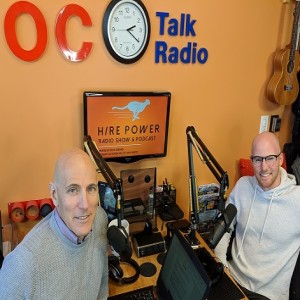
Monday Feb 11, 2019
Monday Feb 11, 2019
Today we are discussing the Steps to building & scaling headcount in growth mode. Making sure that execution & time to fill are aligned.
Today’s Quote:
"Growth is never by mere chance; it is the result of forces working together." - James Cash Penney
Show Guest:
Brendan Rogers, Co-Founder & Leading Recruiting of Wag Labs, has raised over $360 million in venture capital, most recently $300 million from Softbank's Vision Fund. Wag! connects pet parents to dog walkers and is currently live in over 110 U.S. cities. He co-founded a social discovery service to meet new people which grew to over 50 million users in over 10 countries and was acquired by IAC in 2014.
Brendan's next big event will be speaking at the ERE Conference on April 22-24th.
Episode Highlights:
- How to ramp up from 0 to hero
- Steps to put in place to avoid making hiring mistakes
You company closes your first round of funding
- 10 -12 roles from Nothing
- no resources & no systems in place
- Spreadsheets, manual task-oriented, process
Preparation before go mode
- Building out pipelines, similar spaces, consumer-related companies.
- How to avoid making the wrong hire.
- How to scale for maximum impact
- Tools needed. Process in place, a foundation to scale.
- Get really good at identifying the right people, connecting the dots, sourcing- research
- He does a ton of research, knows his space.
- Strive to keep quality really high. Target specific businesses.
Action Plan & Execution
- First hire should be a recruiter
- Identify what is needed & write job descriptions
- Right messaging
- Tackled building pipeline, hired.com
- Spreadsheet
- Hired a recruiter, brought in an ATS (applicant tracking system)
First:
- Get an ATS system first! -like Newton, Google (hire with Google) Greenhouse, lever
- - take open requirements and intake with each hiring manager. Know the roles from top to bottom
Second:
- Build a pipeline, training managers on how to use the ats, become partners with the hiring managers
Third:
- Hire a recruiter only after 5+ open roles.
- Admin- for cost savings
- Having a foundation will only help you to scale.
Key Take-Aways
- Be best friends with your Hiring Managers
- Be on top of everything
- Always be available
- Invest in the right tools
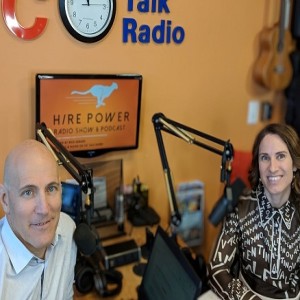
Thursday Jan 24, 2019
Katie Weber: Evaluating Your Team to Get the Right People in the Right Seats
Thursday Jan 24, 2019
Thursday Jan 24, 2019
Today we are talking about Workforce Planning and our goal is to provide Clarity of what is really needed vs. what you think you want. Evaluating Your Internal Team and Your Mission is crucial to get the right people in the right seats at your company!
Today’s Quote:
"Never look back unless you are planning to go that way." - Henry David Thoreau
Show Guest:
Katie Weber, Founder & CEO of KMW Recruitment Consulting, a recruitment and coaching firm specializing in high-growth and transition scenarios for small to mid-size companies. With nearly 20 years of diverse recruitment experience, Katie has worked around the world with early stage start-ups to Global Fortune 500s. She now utilizes that experience to quickly assess recruitment challenges, recommend and implement best practices, and find creative solutions ranging from engaged search to plug and play recruitment teams for her clients. She has developed a Recruiting Search Framework with supporting tools that facilitates organizational communication, reinforces recruitment branding, eliminates bias, and attracts the right talent. With the addition of High Performance & Career Coaching, she ensures that the candidates she places change the game with levels of confidence, employee engagement, productivity and influence that are off the charts. Her hires are often the company's best hires and top performers. The company motto is: It's not just about filling a position, it's about fueling your mission!
Katie serves on the Advisory Board for London-based start-up, Grad DNA, holds a BA in Psychology from Elizabethtown College, and has a coaching certification from High Performance Institute. She is available for speaking engagements or workshops and will be a speaker at the April ERE Recruiting Conference in San Diego.
Episode highlights:
- What happens when you don't plan?
- Where to start
- How to implement your hiring plan
Why is it important?
- Run Lean- Instagram sold for $1B to Facebook with just 13 employees (2013)
- Cost of a Bad Hire
- Kills Morale, productivity
- Disengagement is contagious
Planning & Kicking off your hiring plans for 2019
-
- Evaluating the Mission
- Defining what needs to be accomplished
- Think about leadership first.
- Evaluate the team that is already in place (workforce planning)
- Budget & Timeline
- The volume of positions needed to be filled, vs lack of internal leadership to manage them- open headcount before leadership.
- Evaluating the Mission
- Invest in hiring / promoting strong leaders
-
- To chose the right recruiting strategy (partner, in-house recruiter)
Define who “We” are and Who we need
- First Who, Then What - Jim Collins
- Dare to Go From "Good to Great" - “First the people, then the direction”
- Get the Right people on the bus, In the Right seats
- Get the Wrong people off the bus
Evaluating your internal team
-
- Cultural fit (Values, Attitude, Mission Ownership)
- Education & Training required
- Provide resources
- Work Performance
- Current
- Growth
- Accomplishments- Recognize even the small wins
- Fulfillment- breeds engagement > Increased Productivity
Employment Branding/Messaging
- Define the 3 things that are most important to them in terms of the job search
- (open leadership) for greater collaboration
- Top 3 trait alignment
- What does that mean
- Usually describing a company challenge
- Transparency
Take Aways
- Evaluate your mission, evaluate your people
- Over communicate everything!
- Fit people into your Company and not your Job
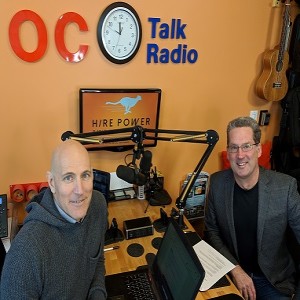
Thursday Jan 10, 2019
Craig Weber: Interviewing for Conversational Capacity
Thursday Jan 10, 2019
Thursday Jan 10, 2019
Conversational Capacity is the ability to balance Candor and Curiosity under pressure. Critical elements to every entrepreneur and business leader who are building an organization. And yet this element is often overlooked in the hiring process.
The great news is, it can be taught!
Today’s Quote:
"The single biggest problem in communication is the illusion that it has taken place." - George Bernard Shaw
Show Guest:
Craig Weber is the author of the best-selling book, Conversational Capacity: The Secret To Building Successful Teams That Perform When The Pressure Is On (McGraw-Hill, 2013) and Influence In Action: How to Build Your Conversational Capacity, Do Meaningful Work, and Make A Powerful Difference (McGraw-Hill, 2019) (Amazon.com). He is also the founder of The Weber Consulting Group, an alliance of experts committed to helping people build more resilient, healthy, and agile organizations. He helps people and teams dramatically improve their performance by treating dialogue as a discipline.
He works with people and teams from such diverse organizations as Boeing, The Royal Bank of Canada, Kaiser-Permanente, PWC, The CDC, the Pancreatic Cancer Action Network, and Los Alamos National Labs. He’s also working with legislators in an expanding list of states to help them engage in more constructive policy debate.
Episode highlights:
- What is Conversational Capacity & Why is it important
- How do you interview someone and accurately evaluate their conversational capacity
- What our audience can implement today to hire & manage stronger
What is conversational capacity?
- Definition 1: Constructive, learning-focused dialogue about difficult subjects, in challenging circumstances, and across tough boundaries.
· Definition 2: The Sweet Spot. Where candor and curiosity are in balance. Open, honest, direct, yet open-minded, humble, and eager to learn. This is where the best learning occurs. Smart people working smart. - Elements / Communication Traits
- When triggered: MIN Low candor. WIN Low curiosity.
- Need the ability to remain balanced. Everyone struggles, but often in very different ways.
Why is it important?
- Defines teamwork. A team that can’t communicate when the going gets tough isn’t a team.
- Why good intentions are never enough: The gap between how people believe they behave bow they actually do.
- Work the issue on both sides: Hire for Attitude and personality (fit) and then build your team’s conversational capacity.
o Hire right, then create a “Conversational Code of Conduct” – clear behavioral norms; formal or informal– to align team behavior with organizational strategy.
How do you recognize and evaluate
- Evaluation of the process
- Well thought through the process
- Preparation emphasis- prep call beforehand
Interviewing for Conversational Capacity
- Locate evidence of past experience
- Personality Assessment
- Behavioral Interview - questions
- Tell me about a time you had to give negative information up the chain to your boss. How did you handle it? What did you say?
- With a colleague?
- To someone who you managed?
- Tell me about a time you were really wrong about something or someone.
- What was your family dinner table like growing up?
- Mock Interview!
- People can learn to converse in a more disciplined, balanced manner. There are skills.
- To be good at working in the sweet spot, everyone needs to do some work. If someone is UNWILLING to do that work, well, let’s just say there are some people you’d prefer were working for your competition.
- CCOC
Key Take Aways:
- conversational capacity needs to be on your management dashboard
- It affects every aspect of your organization’s performance from decision-making, to managing change, to running meetings, and implementing strategy.
- Hire the right people and then make sure you manage them in a way that allows them to bring their best work to your business.
- Get the right people around the table (ability to learn; right temperament, etc, and then build CC of team. Each person will have to do some work to stay balanced.
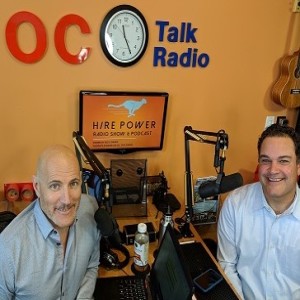
Friday Dec 28, 2018
Brenan German Part Deux: Overcoming Your # 1 Hiring Failure for 2019
Friday Dec 28, 2018
Friday Dec 28, 2018
The One change you must make for 2019. Overcoming hiring failures. Spoiler Alert: it is your Interview Process… 1950 called and they want their process back!
Today’s Quote:
"I can't change the direction of the wind, but I can adjust my sails to always reach my destination." -Jimmy Dean
Show highlights:
- Divulge the secret of an effective interview
- Halos & Horns
- Layout our interview structure
Up front, What is the secret to an effective Interview?
- Process
- Alignment
- Engagement
Halo’s & Horns
- Bias, Conclusions & Assumptions
- Your attitude determines your altitude
- Gut decisions
- Coin flip methodology
Effective Interview Structure
Brenan’s Format
- Plan
- Build
- Decision
- Scoring methodology
- Practice
Rick’s Format
- Structure (Organized, Timed, real time feedback)
- Pre-determined questions
- Give & Receive Feedback
Differentiate your company by closing the process with Everyone you decide not to move forward with!
Brenan German is Founder and President at Bright Talent Resources, Inc., a boutique Human Resources Advisory, Project Management, Training, and Recruiting Services firm.
As lead consultant, Brenan acts as an advisor to organizations wanting to re-engineer or develop a high performing, measureable, technology enabled, human resources function. Brenan has over 20 years of hands-on Human Resources leadership experience developing intelligent and successful talent management functions within some of the country’s most respected and well-known companies such as The Gallup Organization, Edwards Lifesciences, and Black & Decker. Brenan’s particular expertise involves the alignment of talent management strategies to business goals, and the implementation of systems and processes to reach measureable objectives, demonstrating clearly the bottom line impact expected of strategic Human Resources programs.
A graduate of the University of California, Irvine, Brenan is an active participant in a number of organizations: Chair of the Orange County Employment Managers Association (OCEMA), Founding Board Member of the Talent Acquisition Group of San Diego (TAGSD), Member of the Society of Human Resources Management (SHRM), and Advisor to Sigma Pi International Educational Foundation.
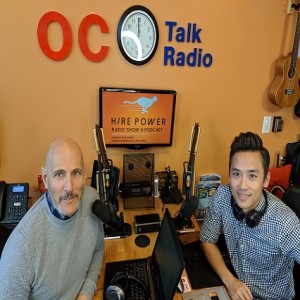
Friday Nov 30, 2018
Sang Huynh: Extreme Transparency, Tech Startup Style
Friday Nov 30, 2018
Friday Nov 30, 2018
The good and great results of full company transparency. There is a growing movement for full openness within companies which is pretty common in Tech startups. The more open you are, the more engaged your people become!
Today’s Quote:
“A lack of transparency results in distrust and a deep sense of insecurity.” - Dalai Lama
Show highlights:
- What is Transparency & Why it is important
- What works & what doesn't
- Transparency in the hiring process
Let’s start by talking about your experience at Tint
- How was the company transparent?
- Open door meetings
- Open Financials
- Employee compensation
- Group decision making
- Different levels of Transparency
- Extreme transparency
What works and what doesn't?
- Ownership
-
- Decision-making process
- Compensation Transparency
- Reduces distractions
- Open venting/surveying
- Open transparency to customers did not work so well
Process for transparency in the interview process
Structure for Transparency
Preparation for roll out
Engagement
- Job postings
- Personal awareness with an assessment to determine the data
- Contact - demonstrate transparency
- Managing expectations- positive experience… expect to hear from us by x date
Interview
- Interview process
- Discuss people challenges
- Product/company challenges
- Preparing the candidate,
- What happens when & time frame
- Lower the barrier of nervousness - must get them comfortable
Sang Huynh is a Mentor at Quake Capital Partners and former COO for TINT (tintup.com), A marketing tech startup in SF that recently exited. One of TINT’s guiding principles is to “cultivate transparency both internally and externally.” From open door meetings, exposed financials (including compensation) and group-based decision making. Prior to TINT, Sang was a VP in the Global Security Group at Bank of America Merrill Lynch which has the traditional corporate culture. He’s here to share his experience as a former leader at two organizations with polar opposite approach to culture.
